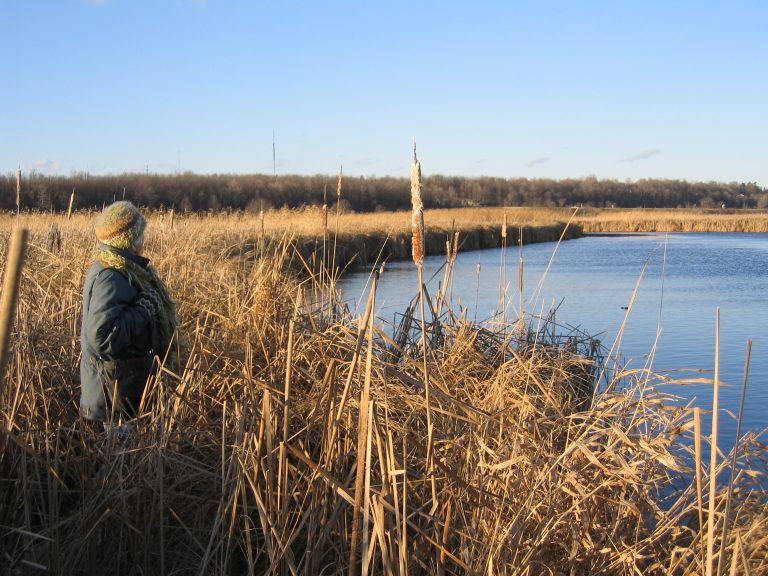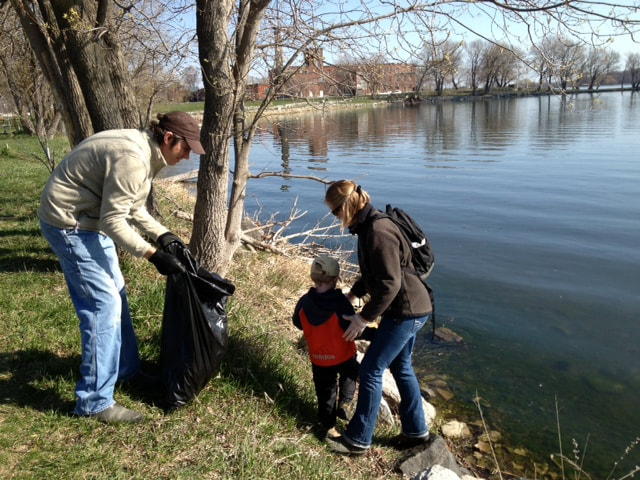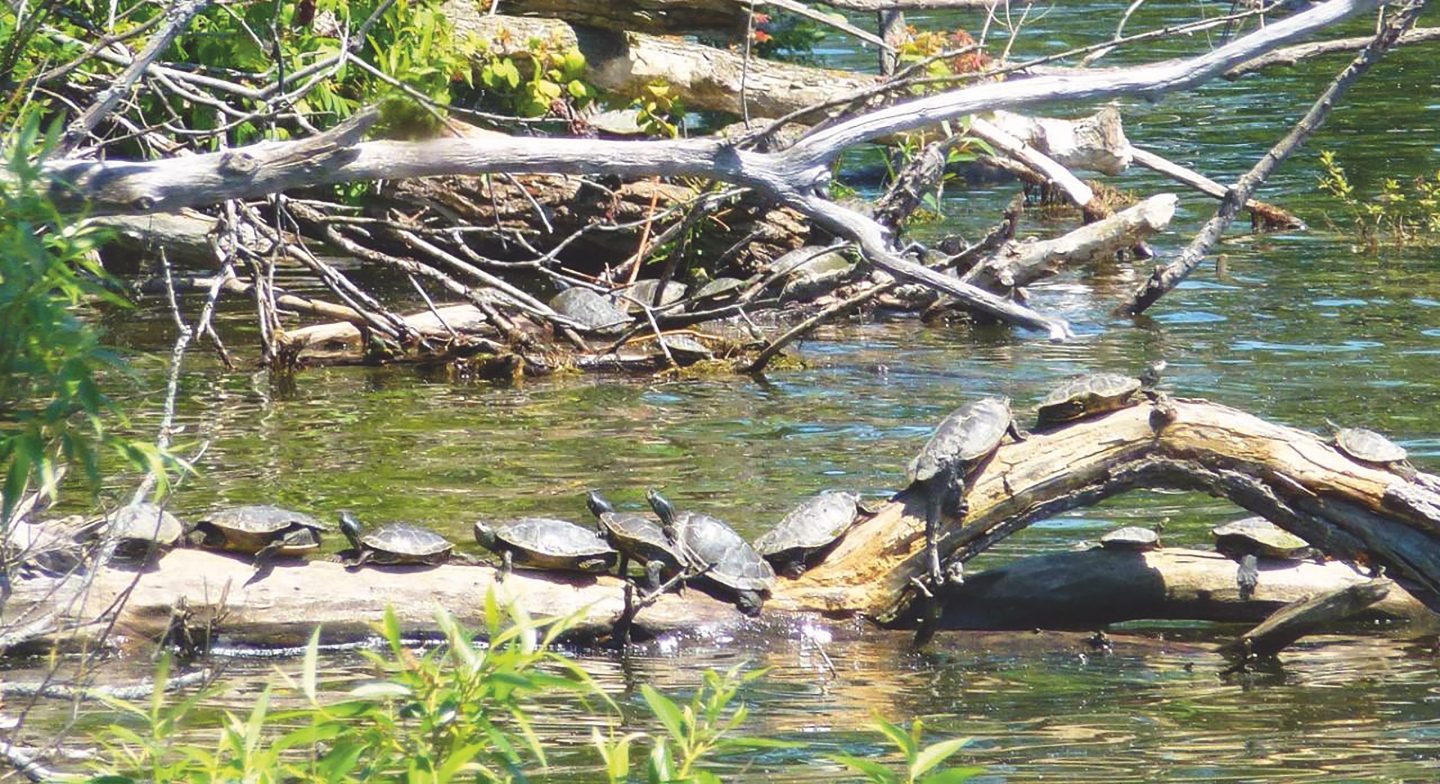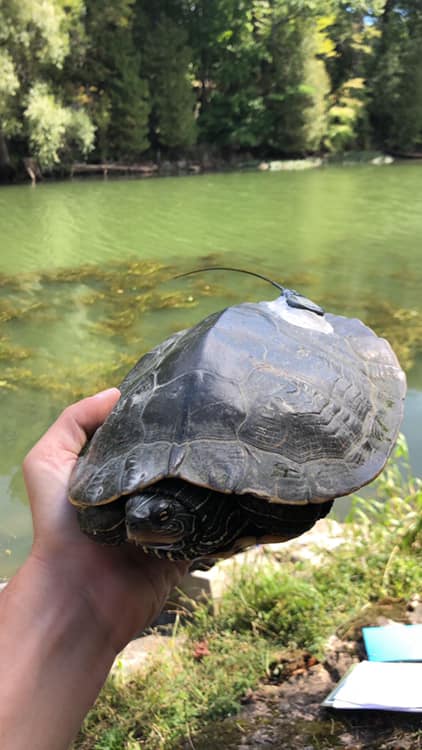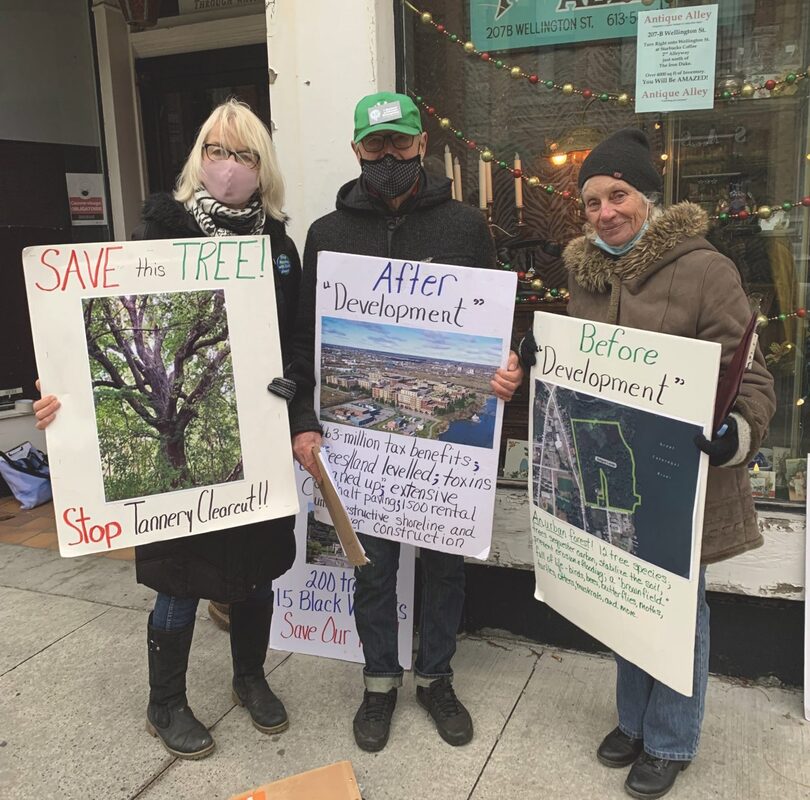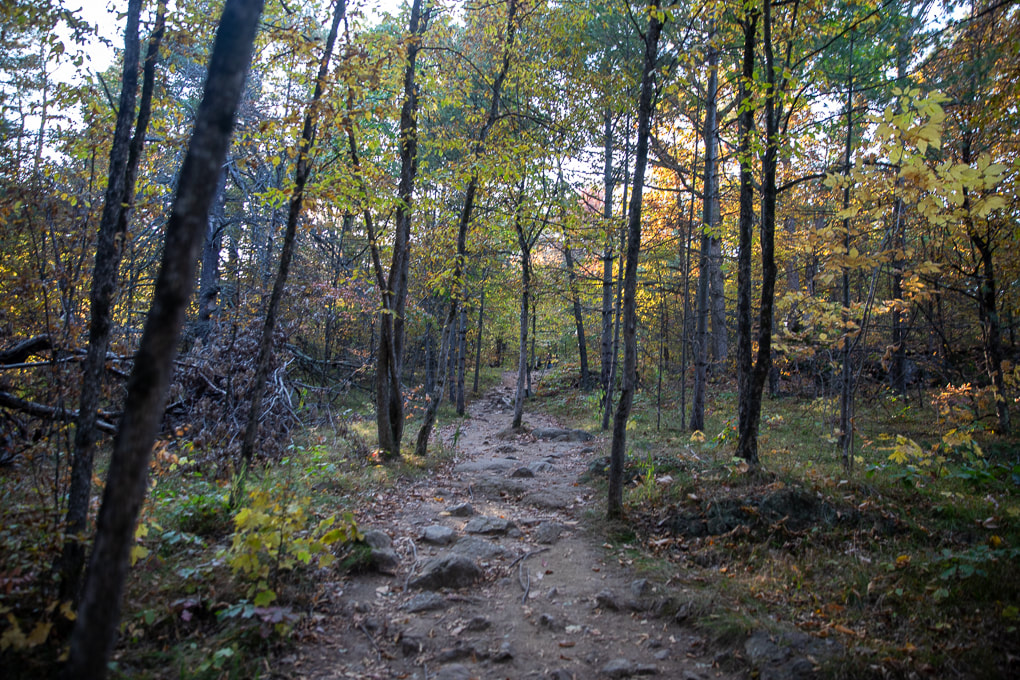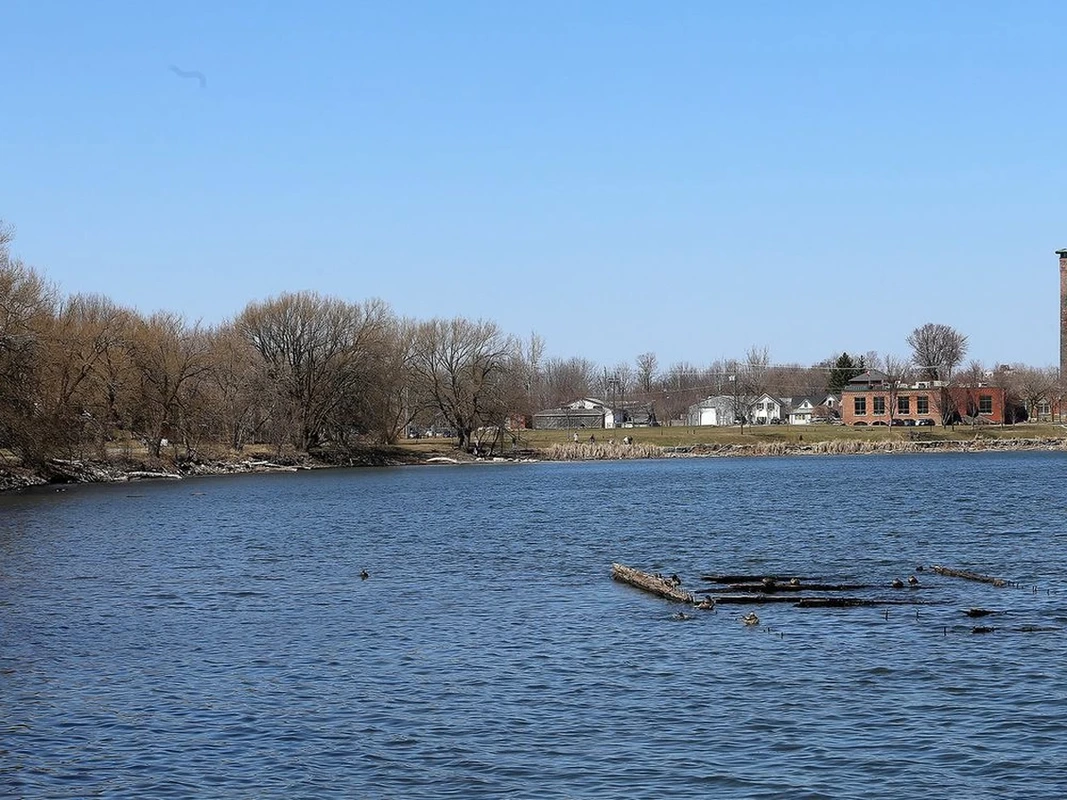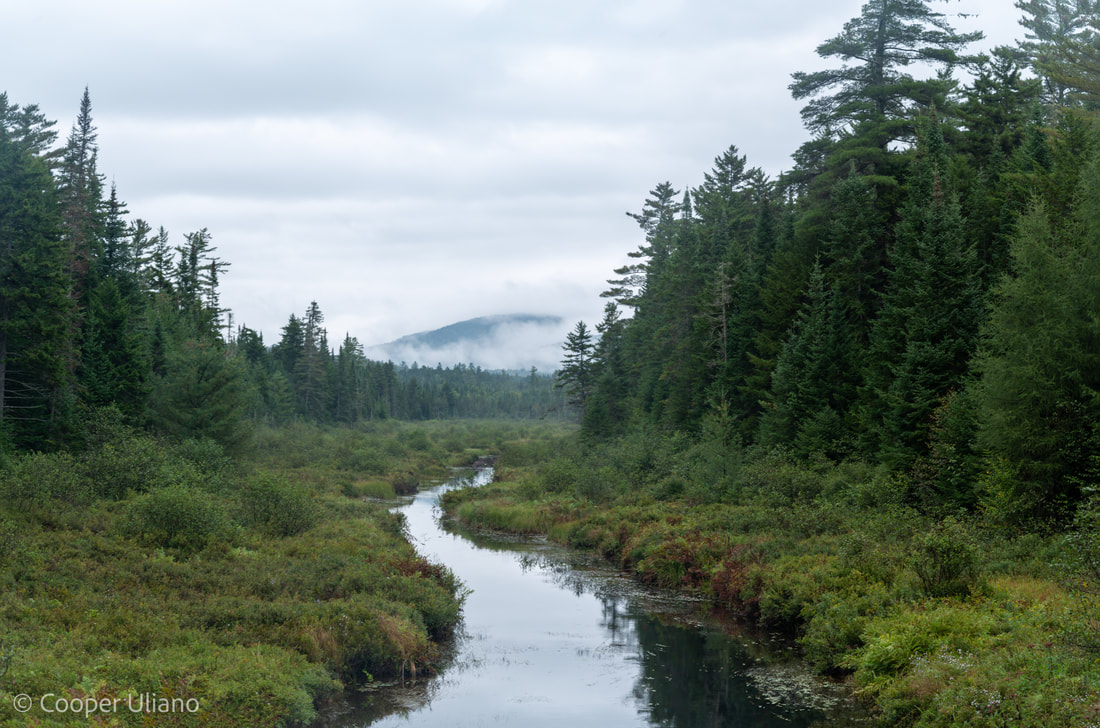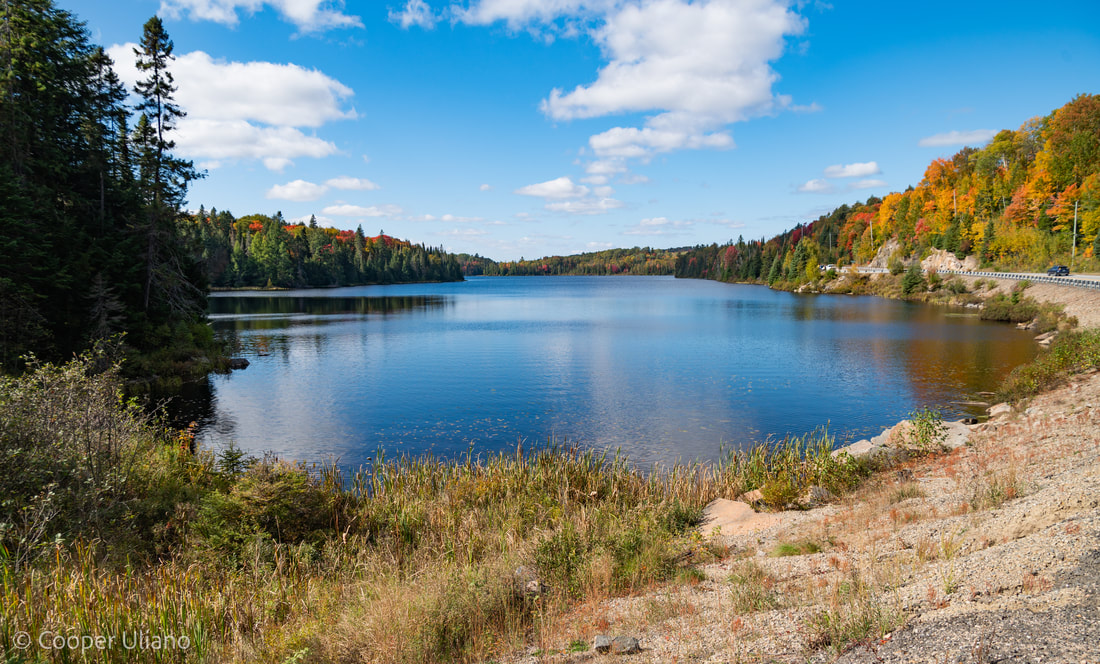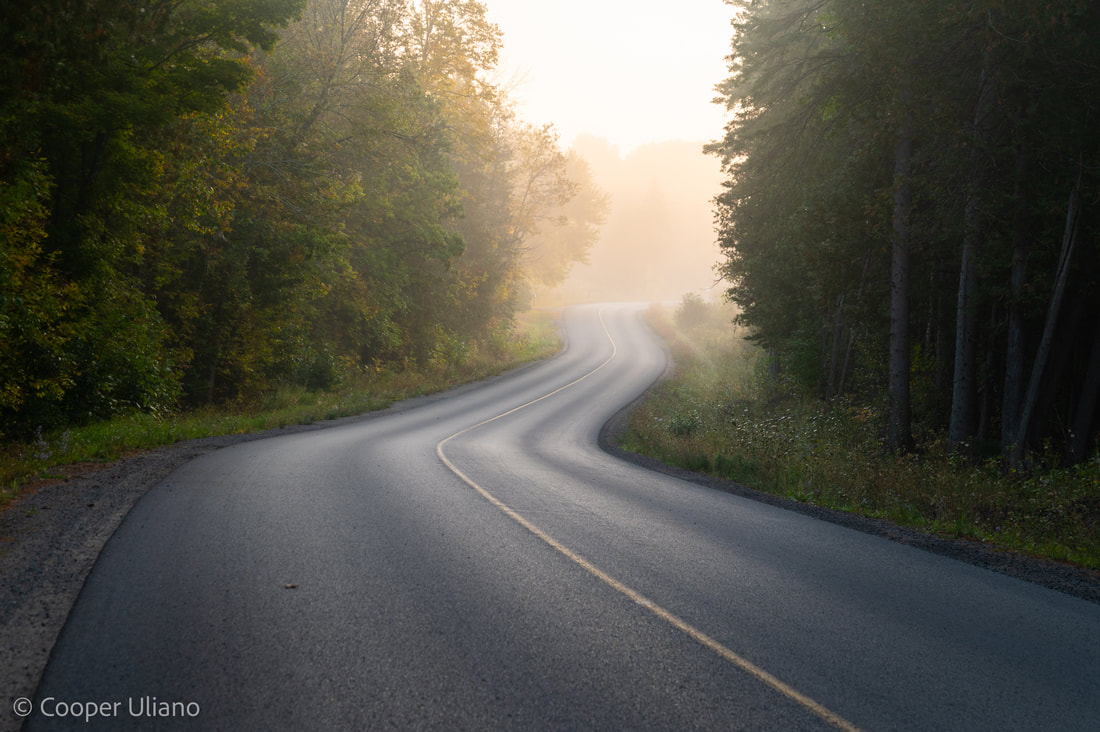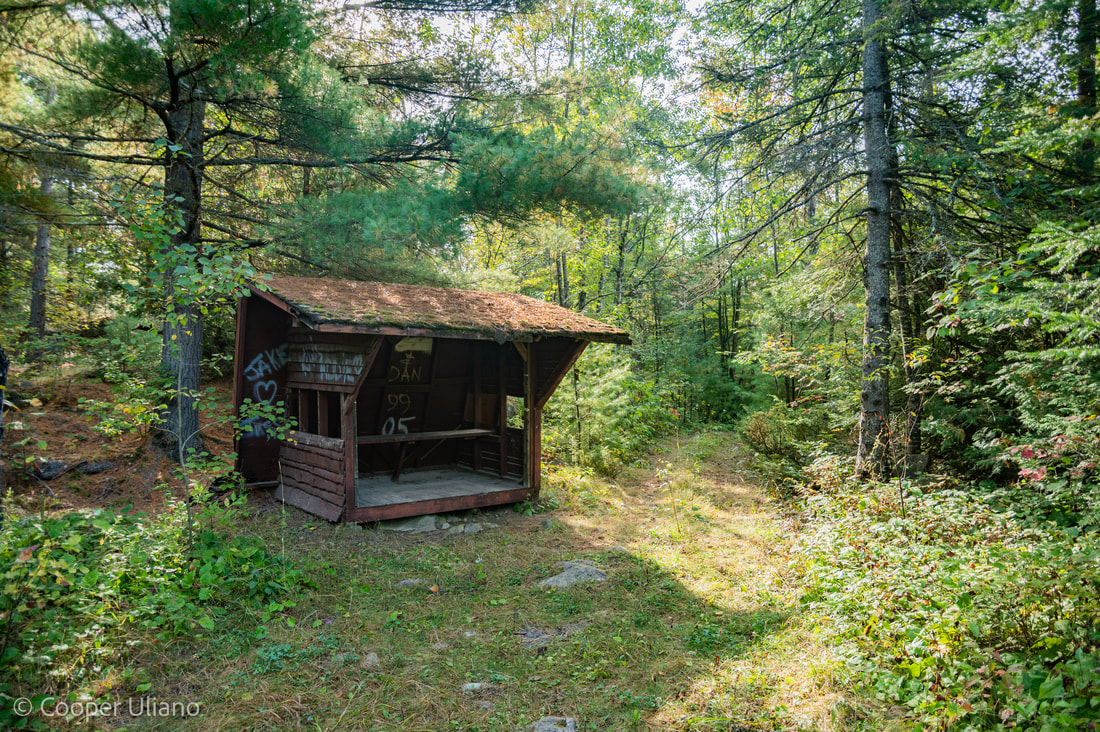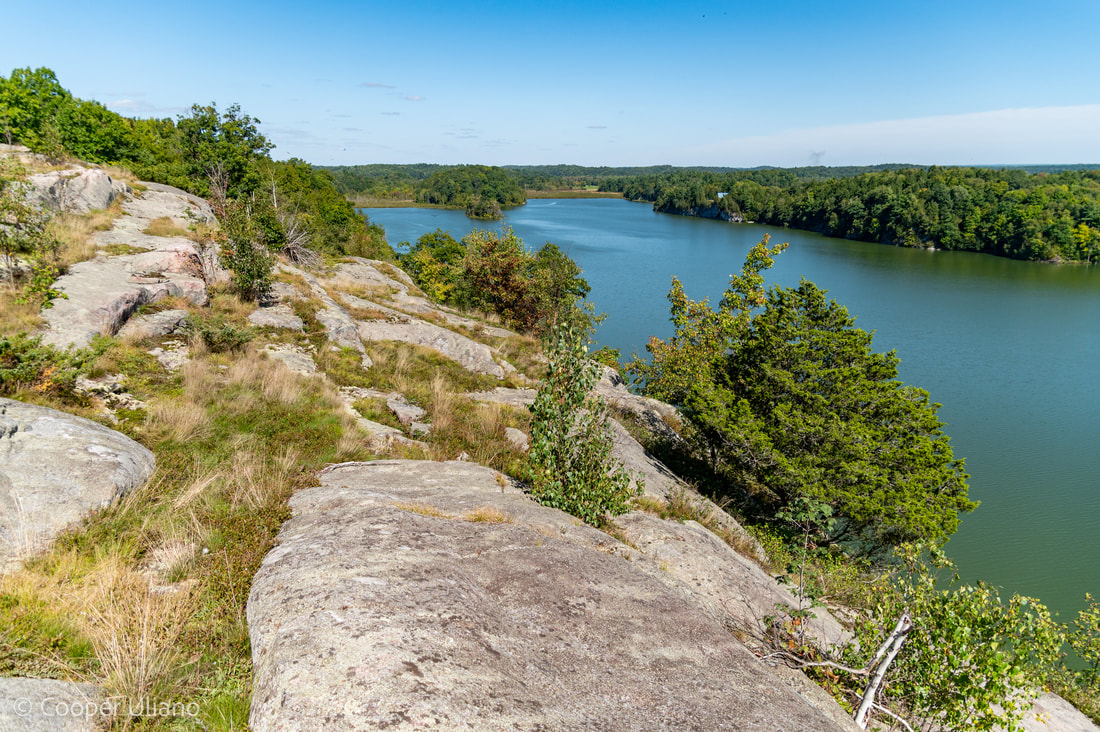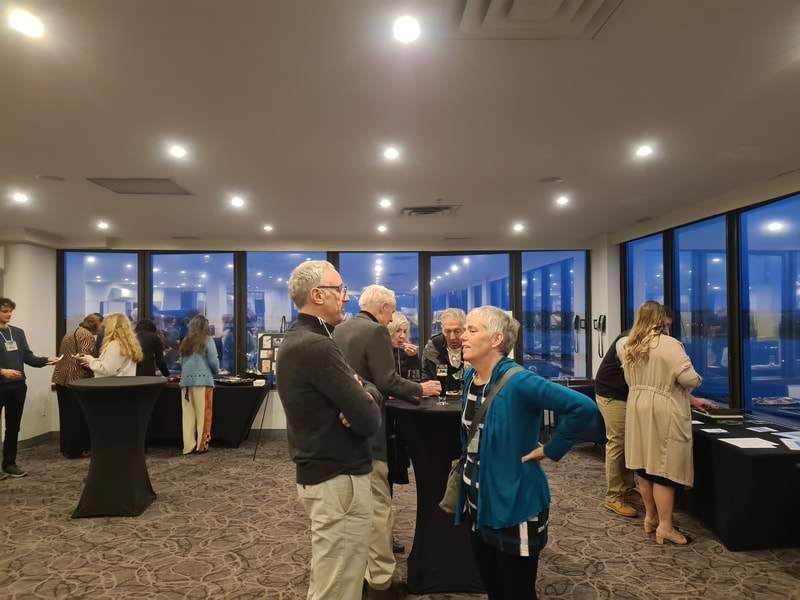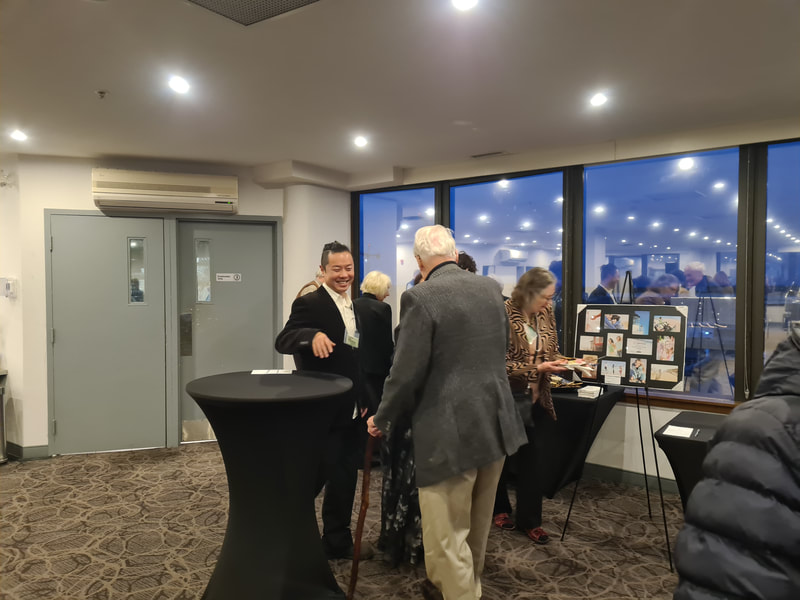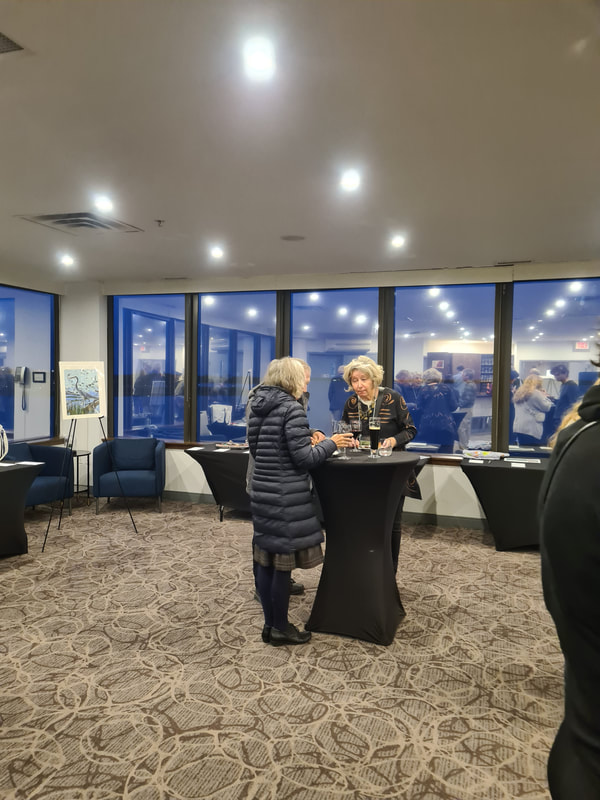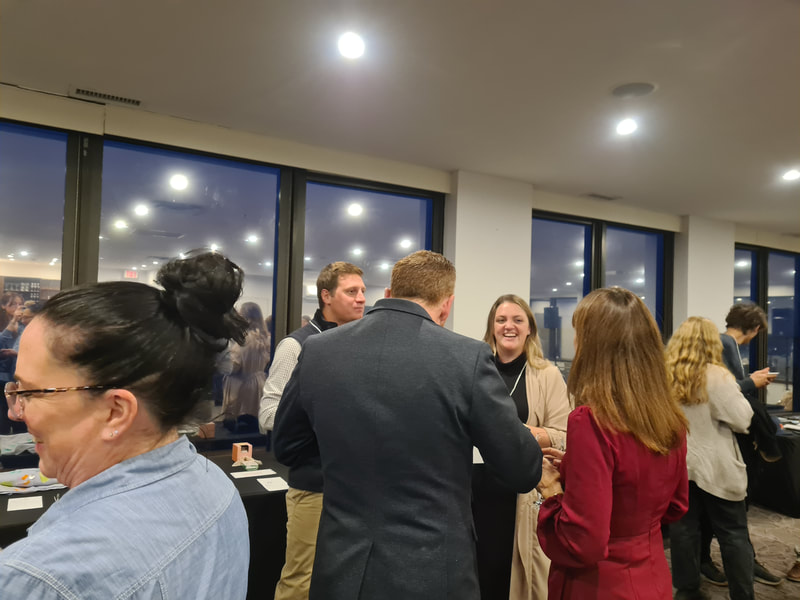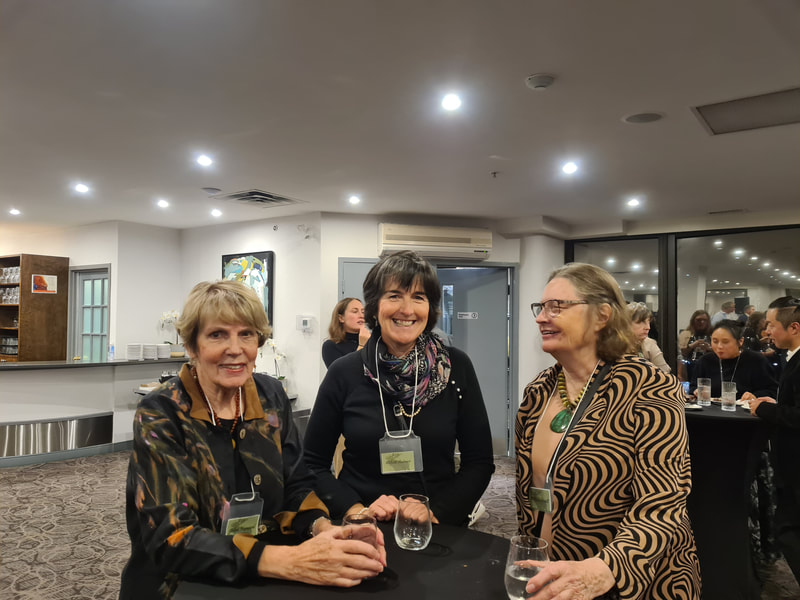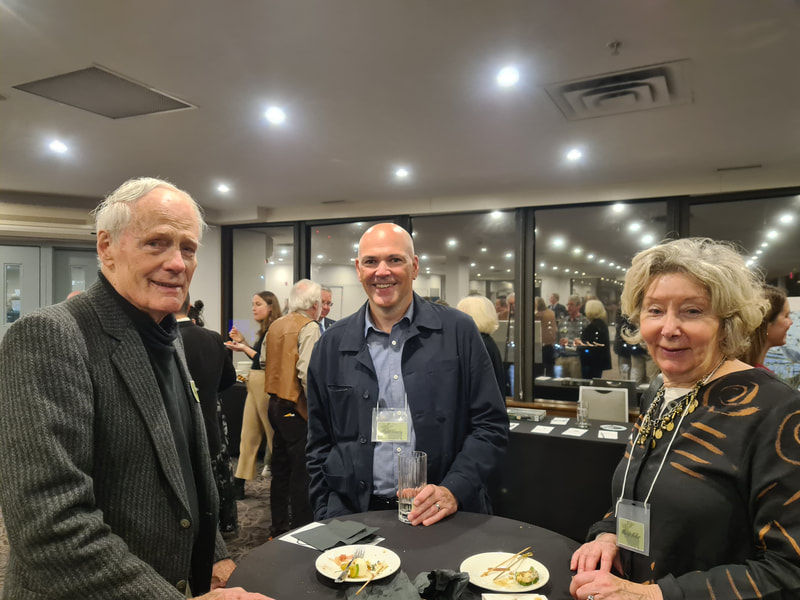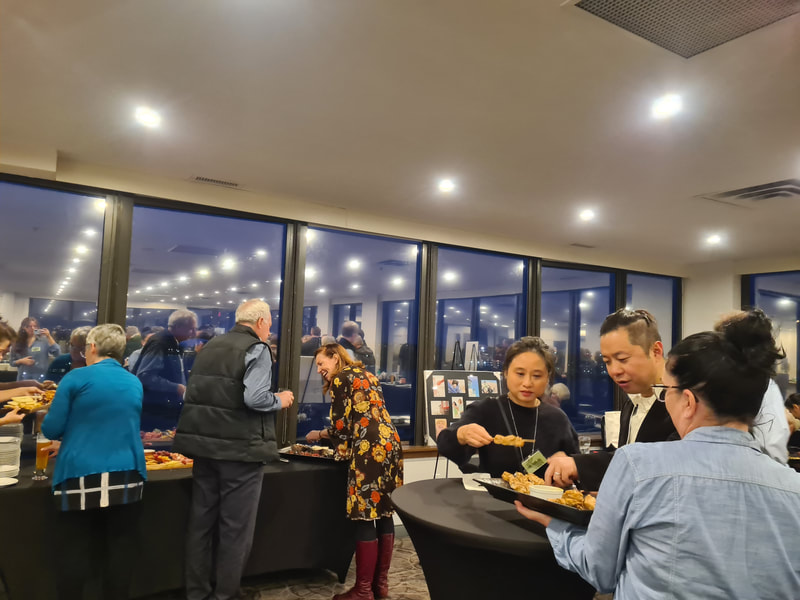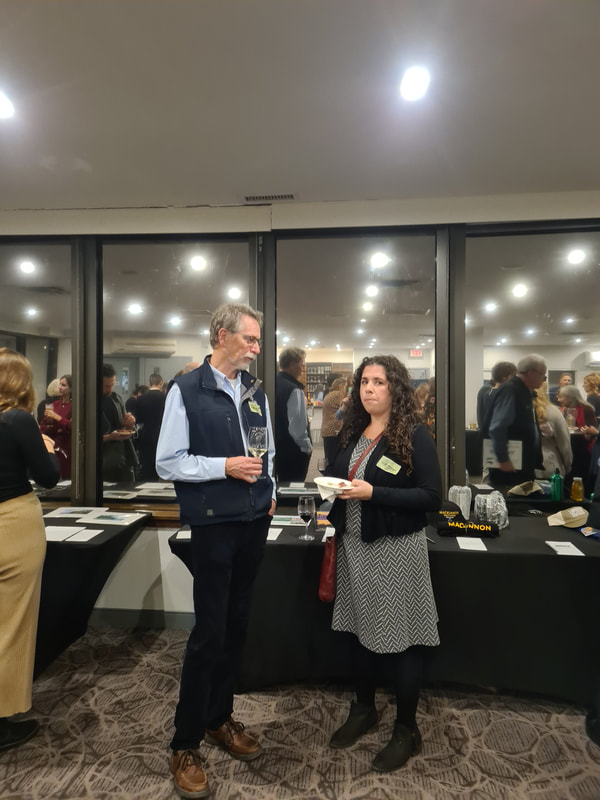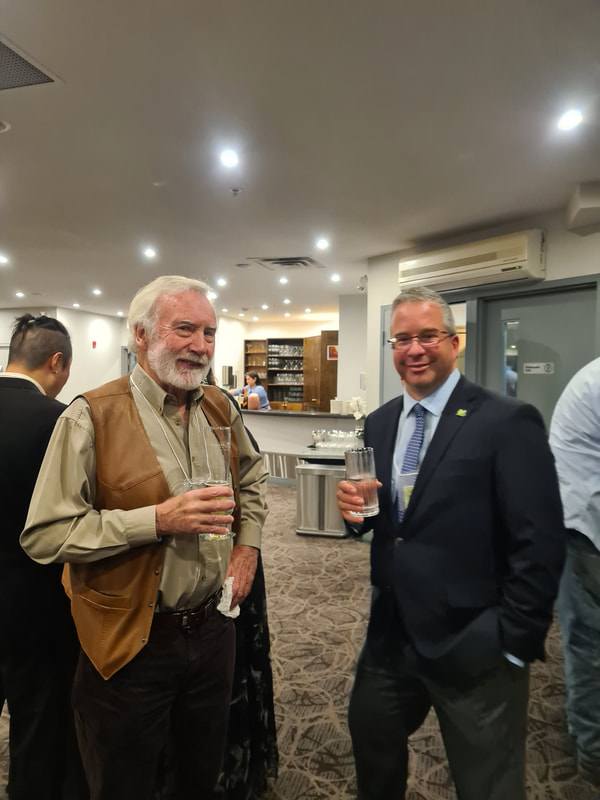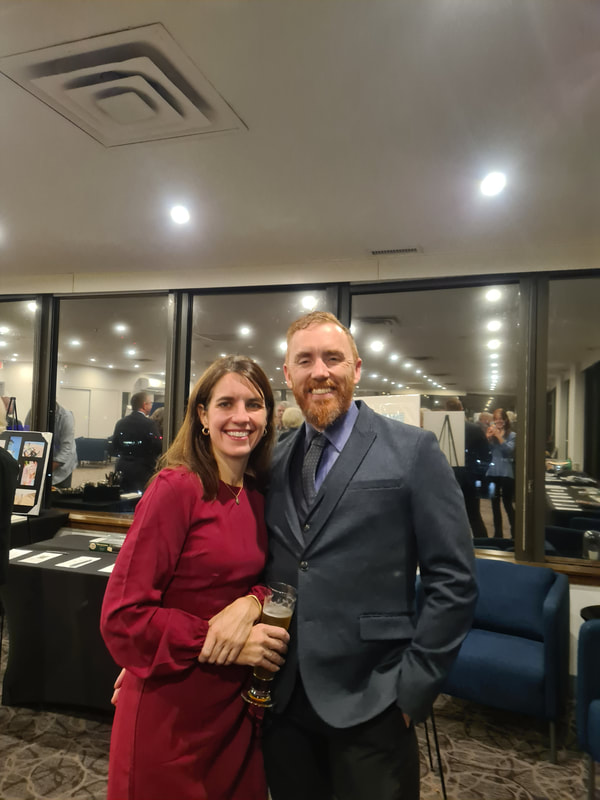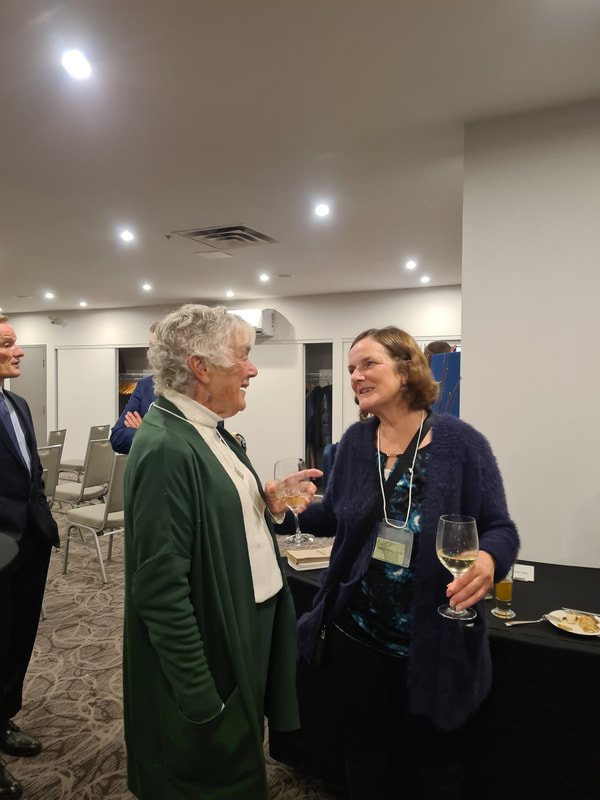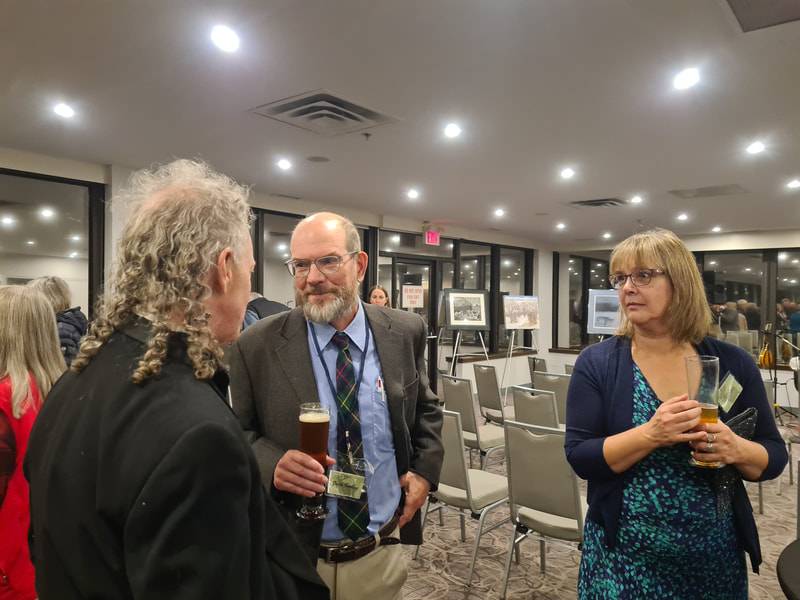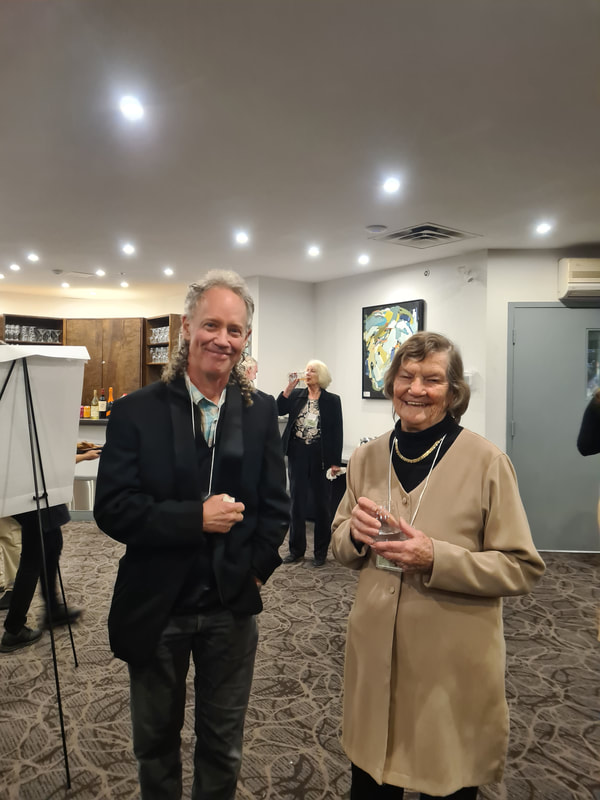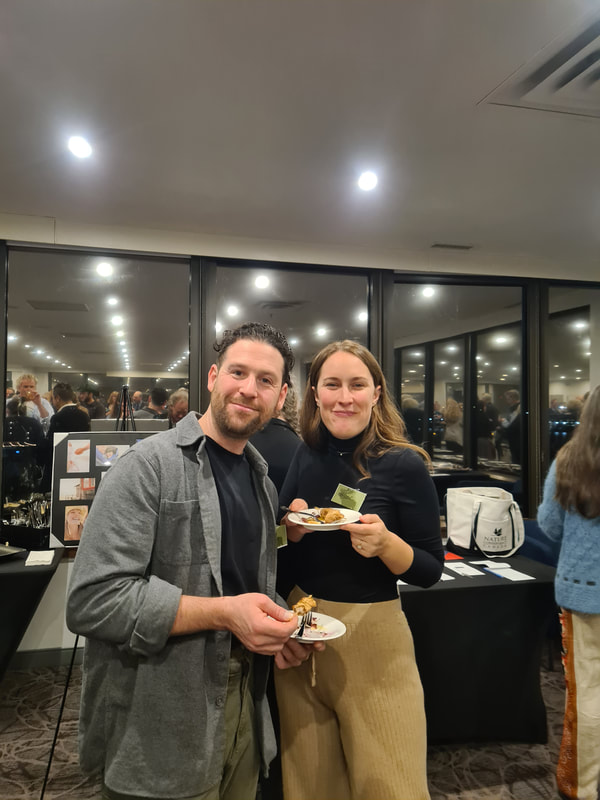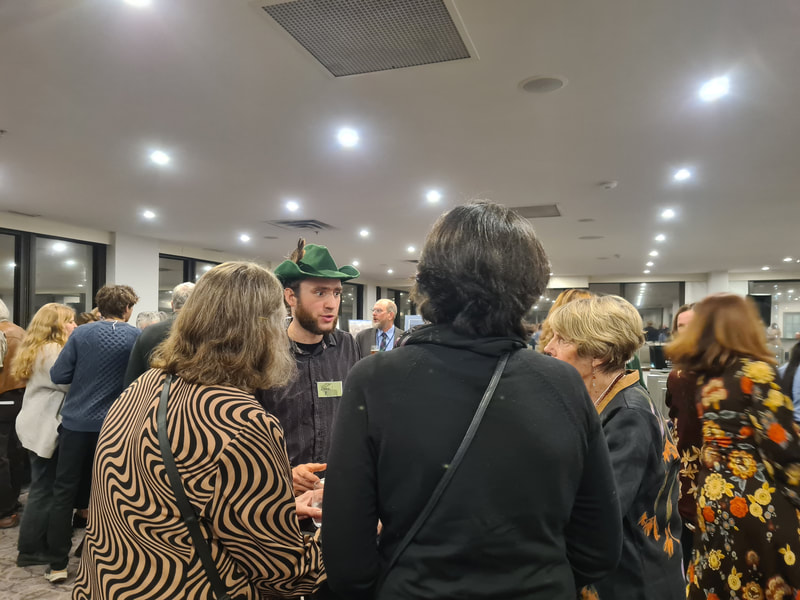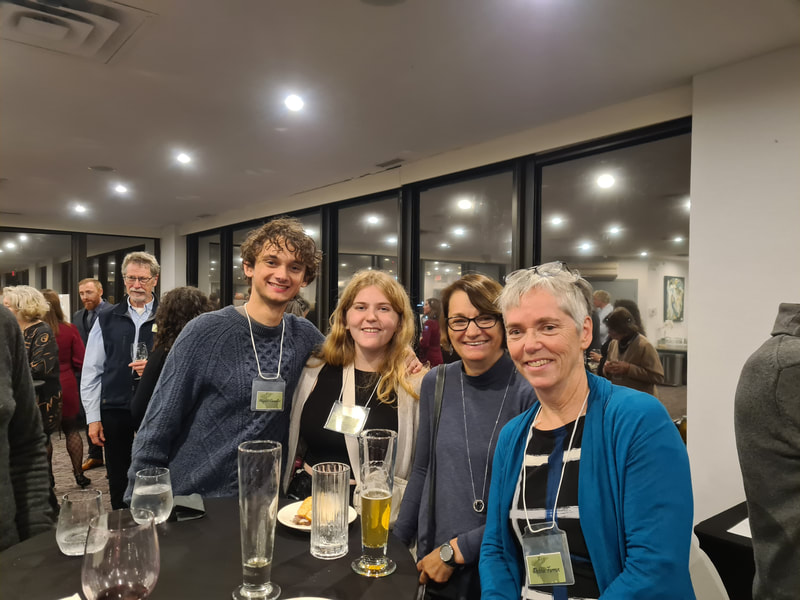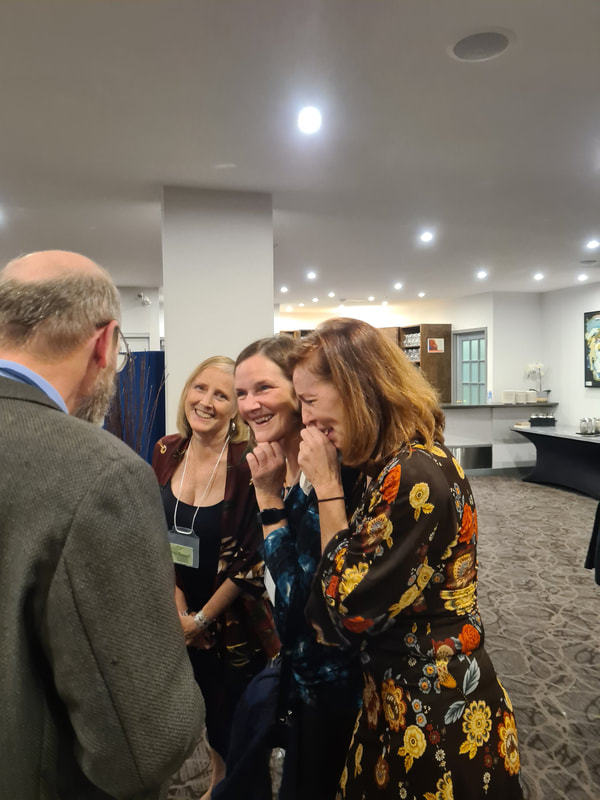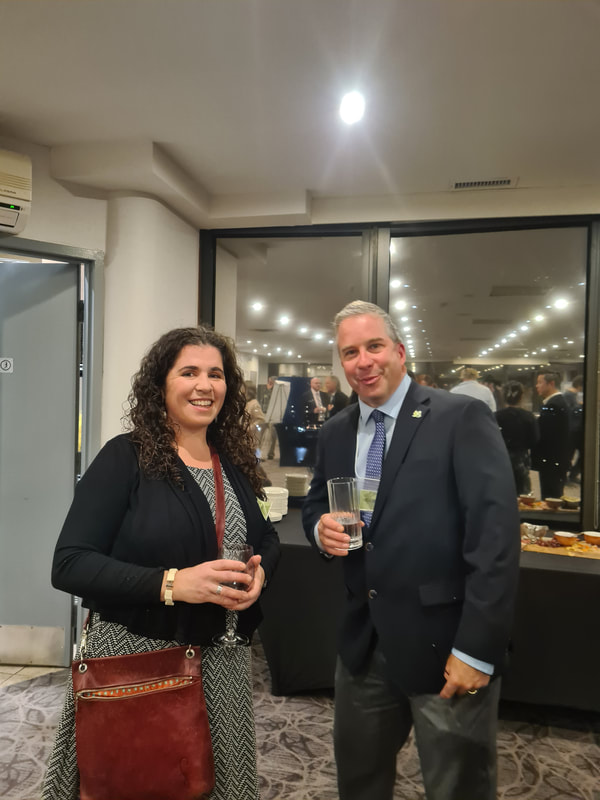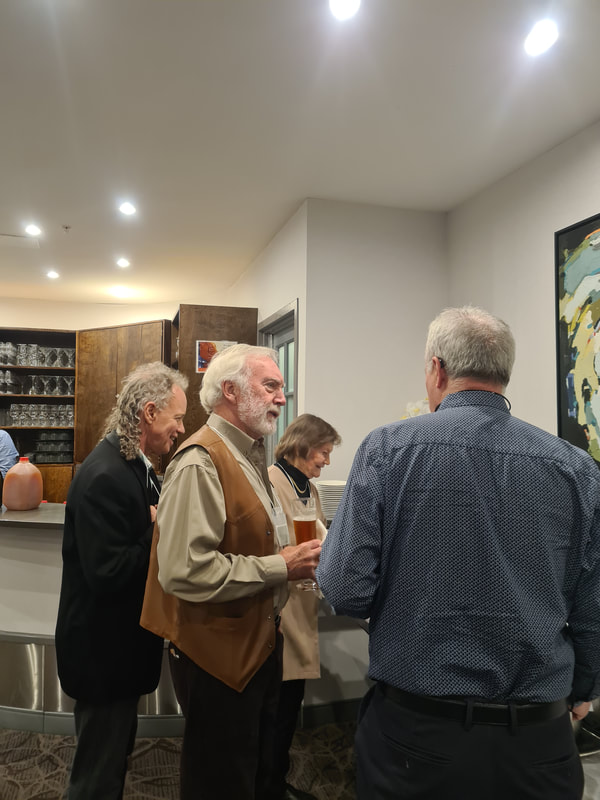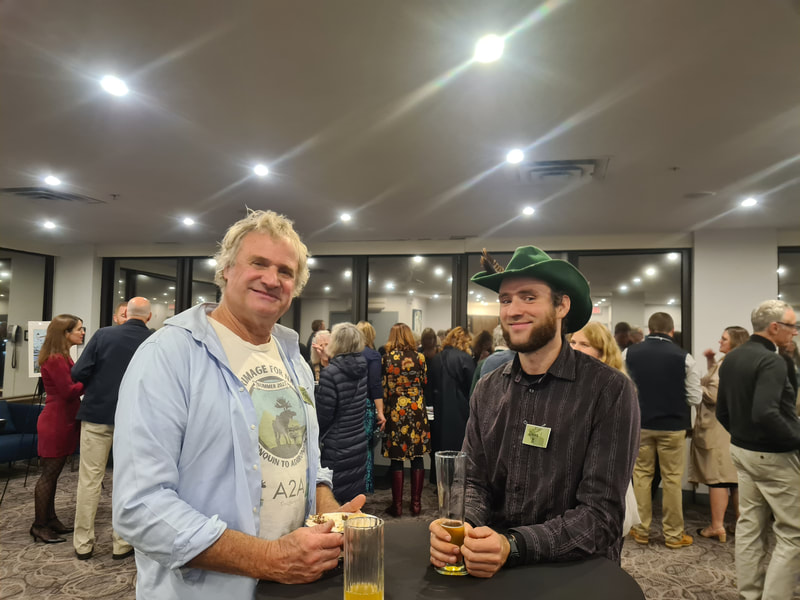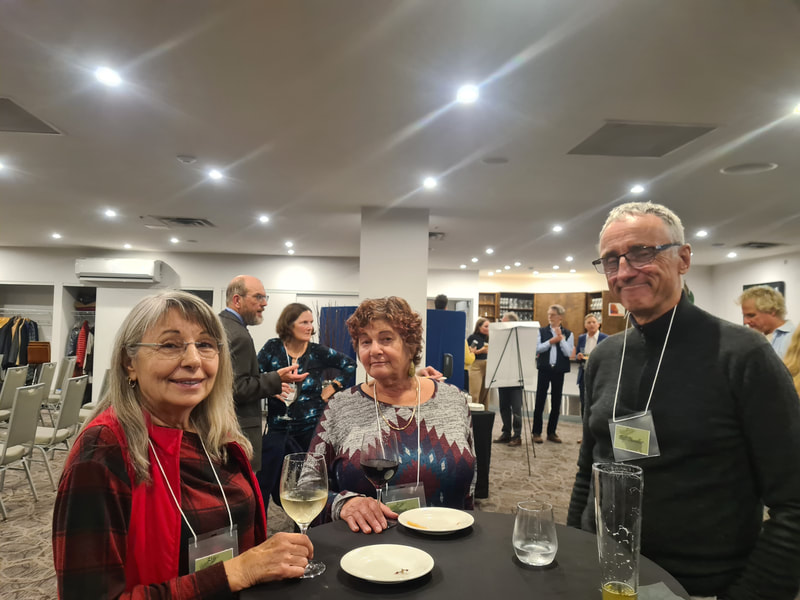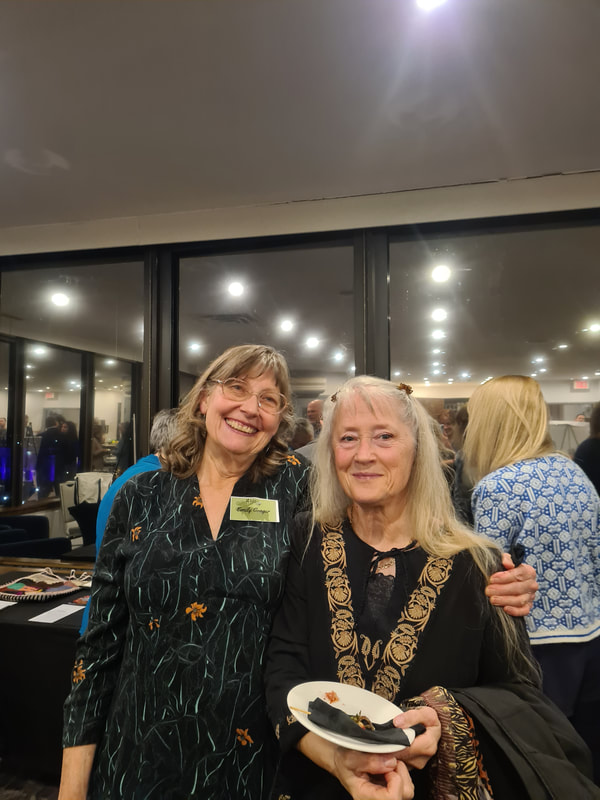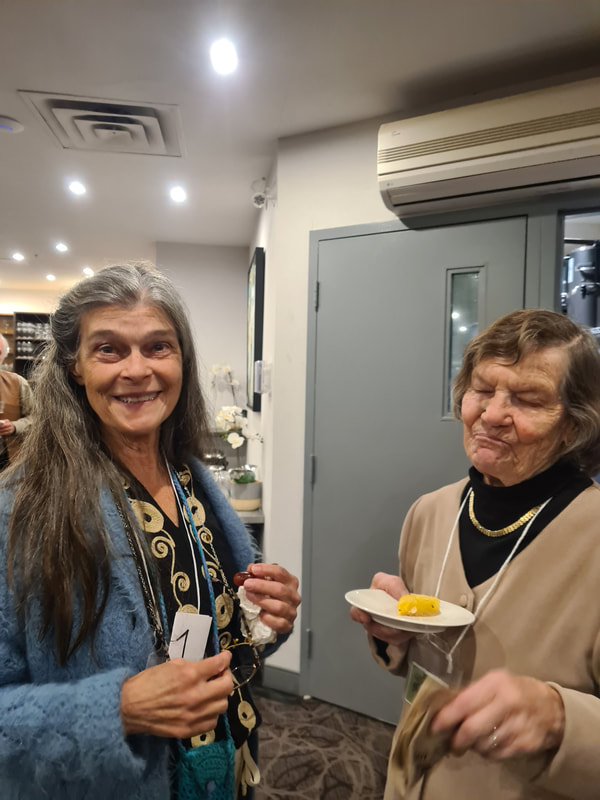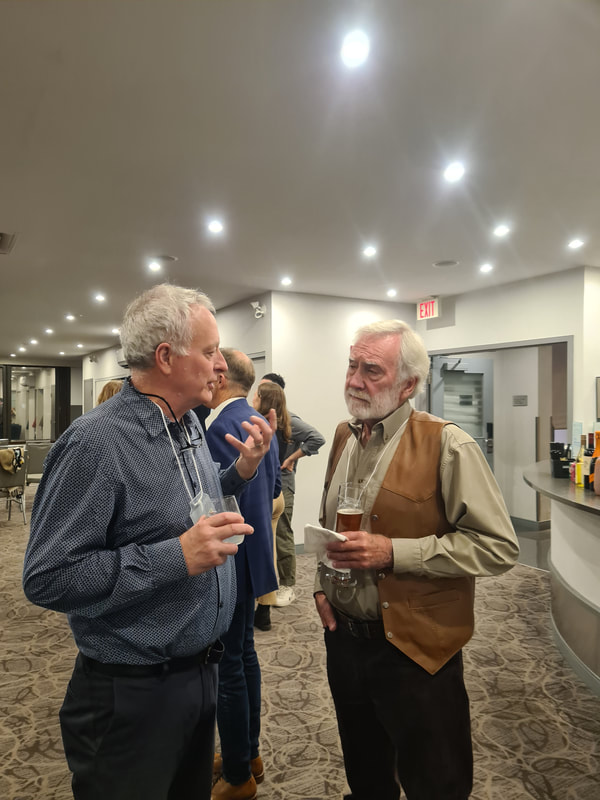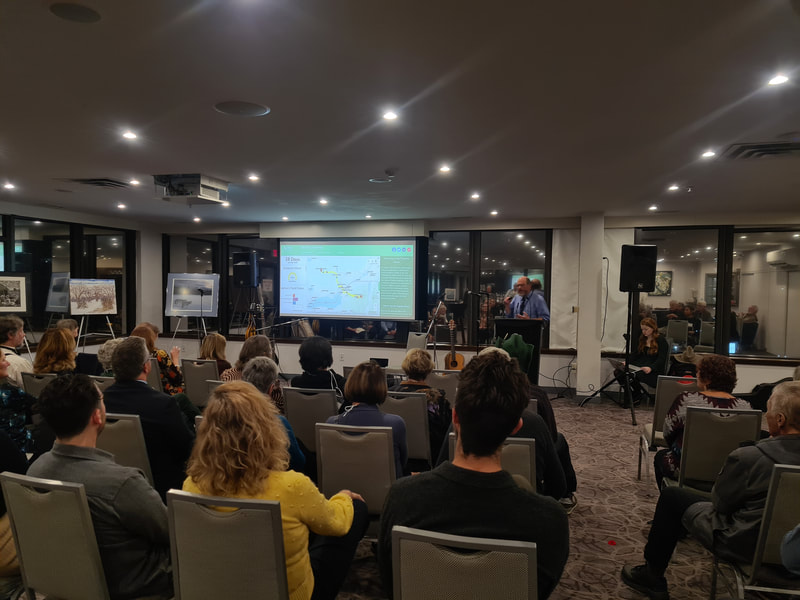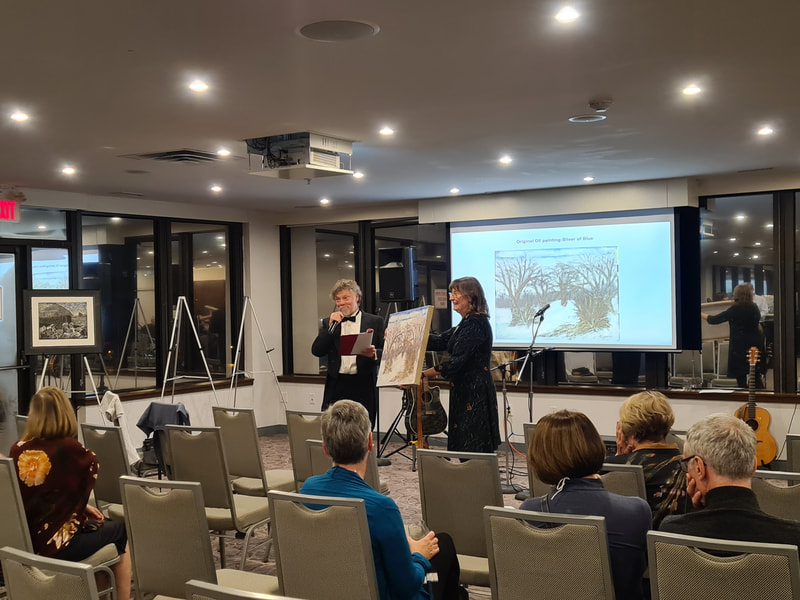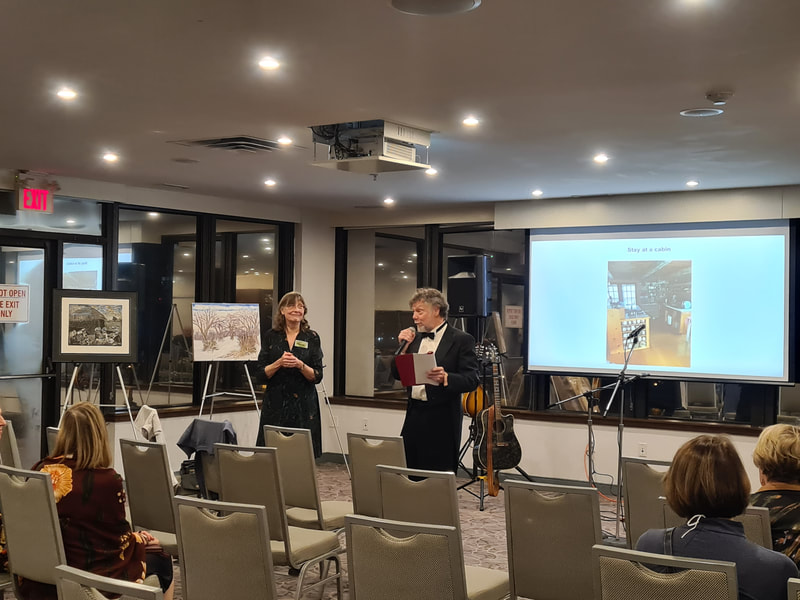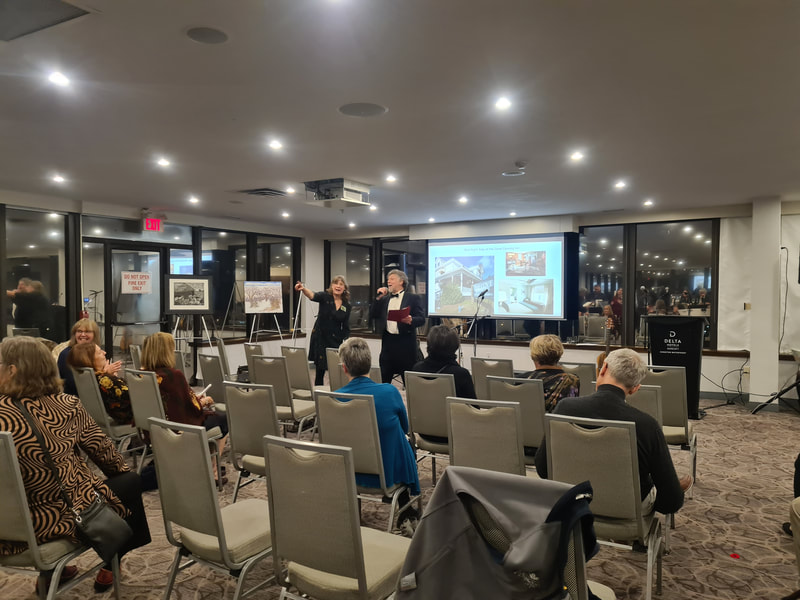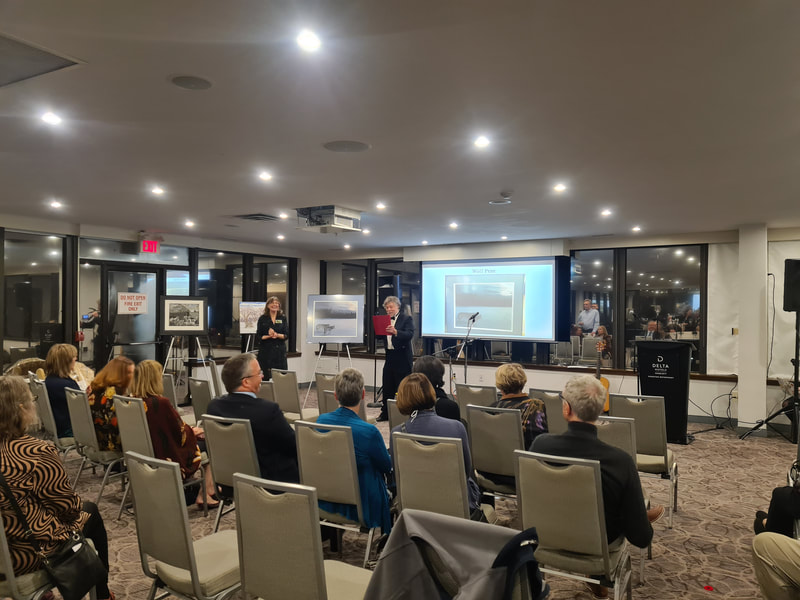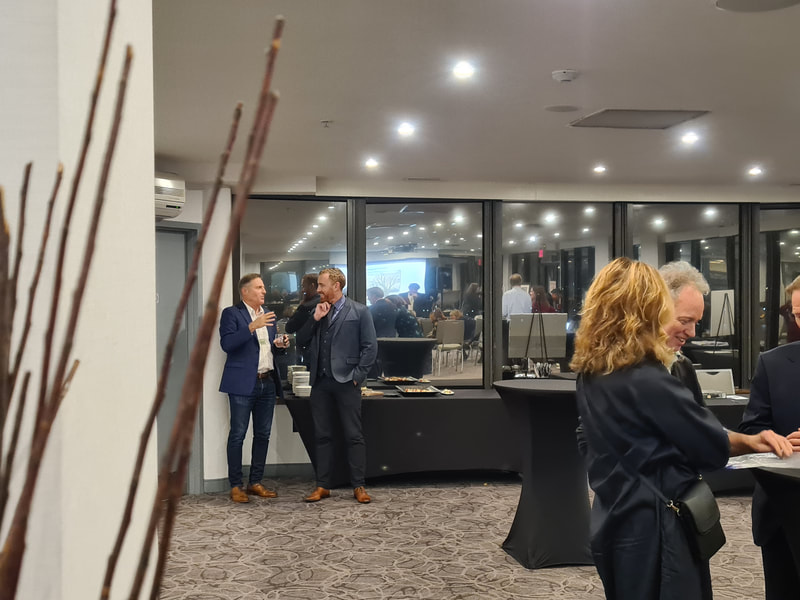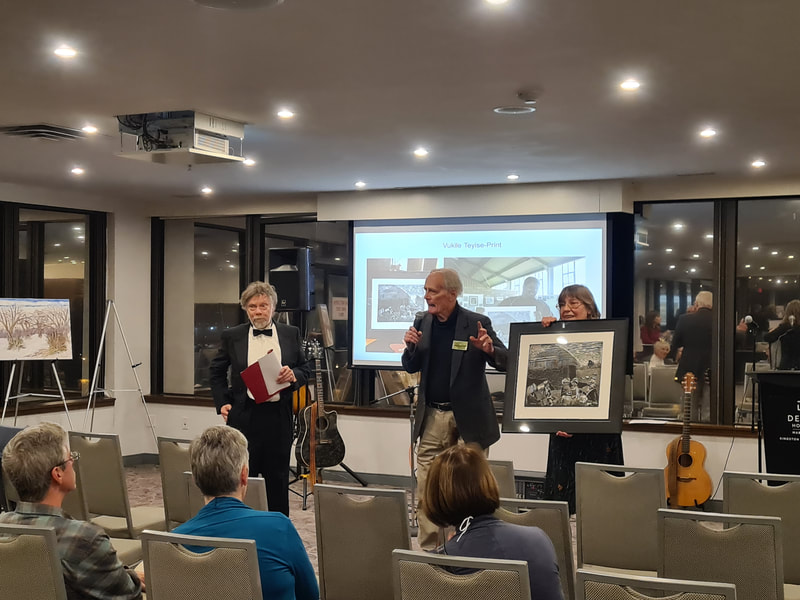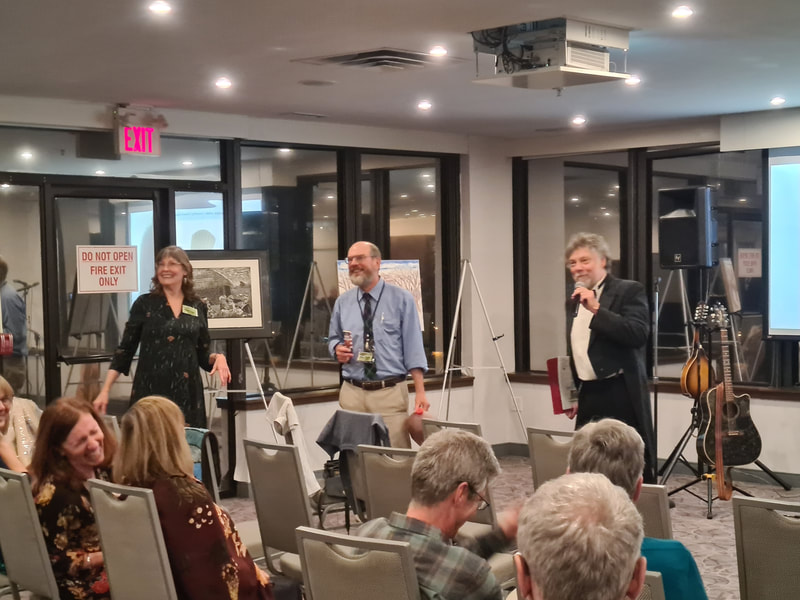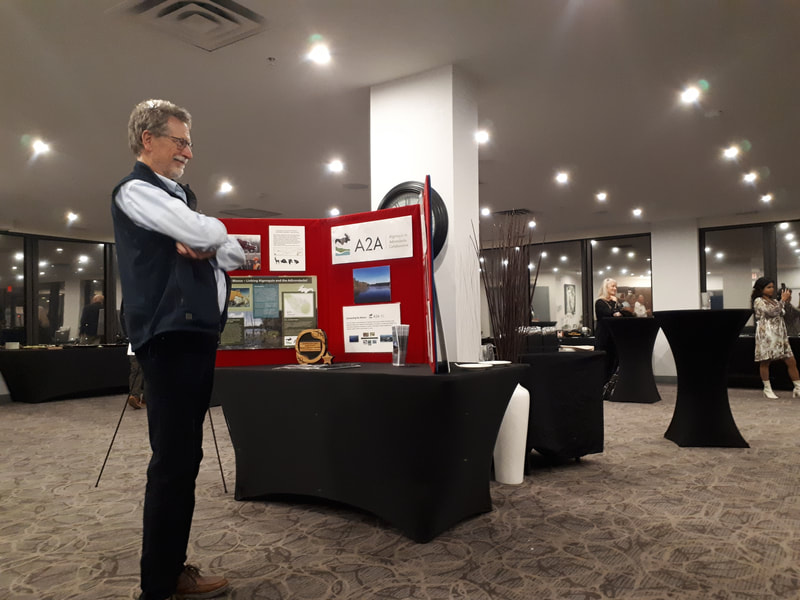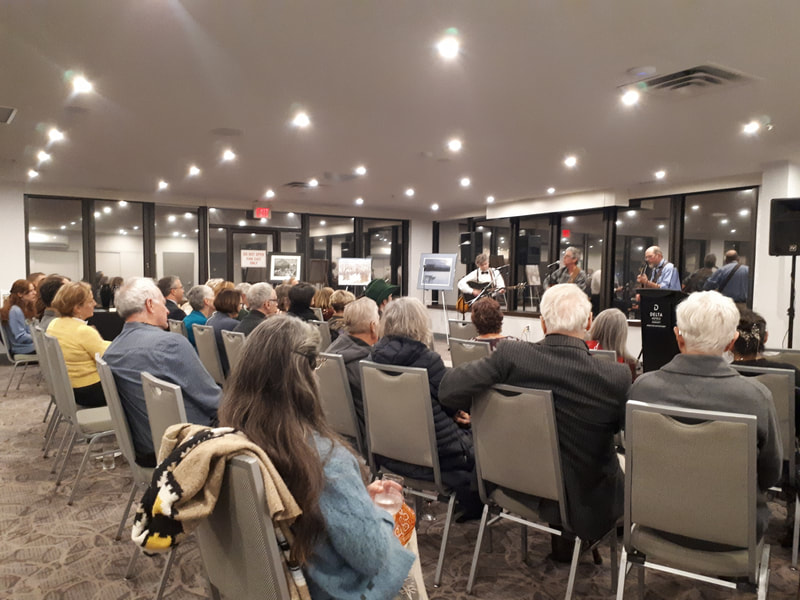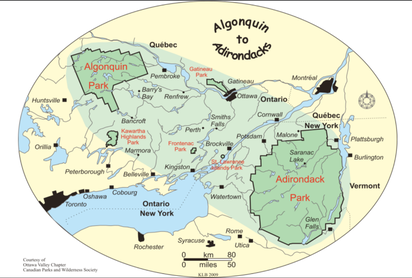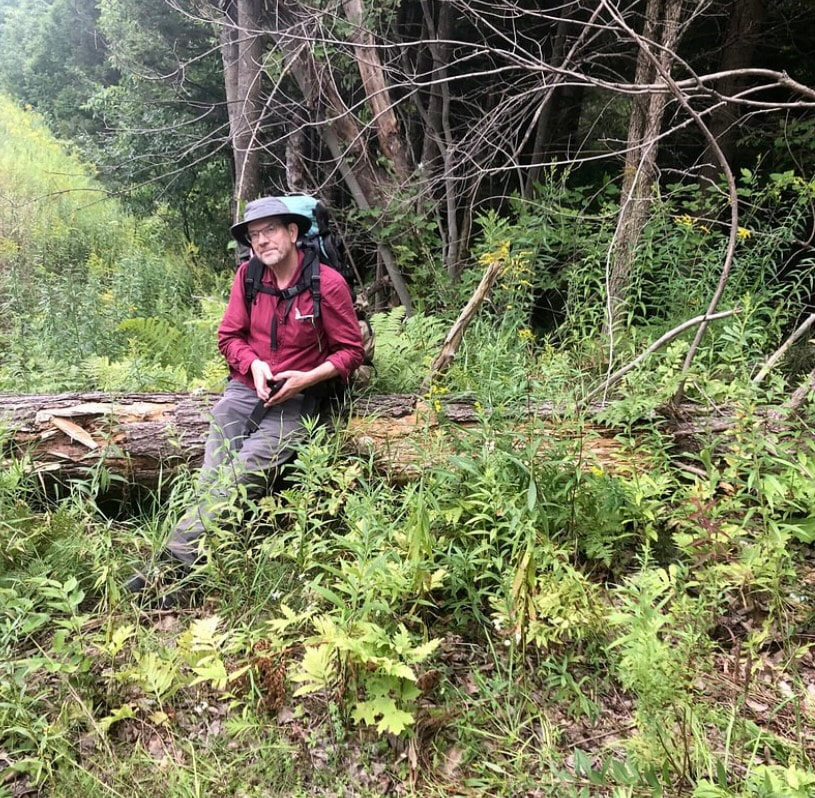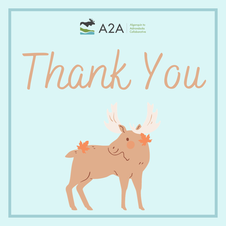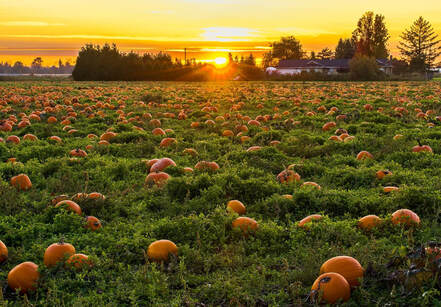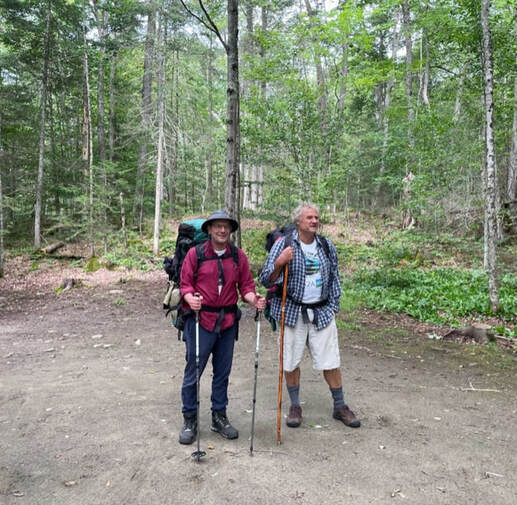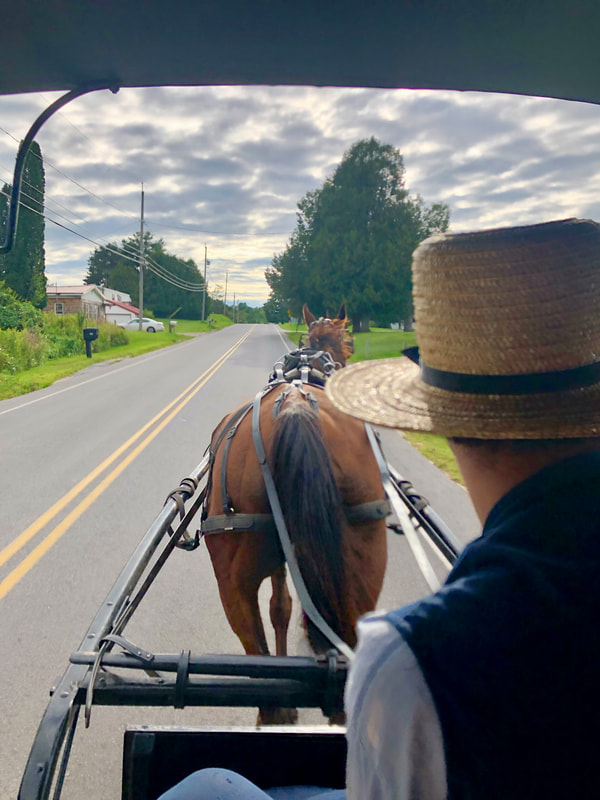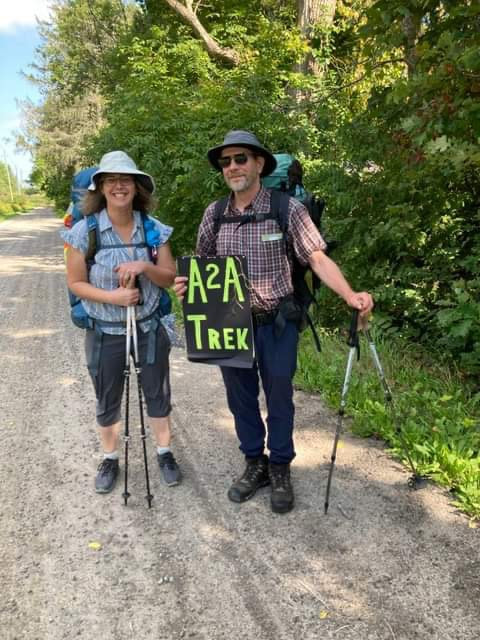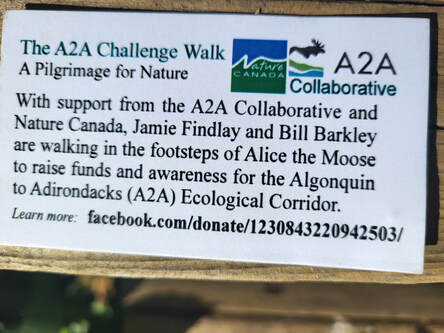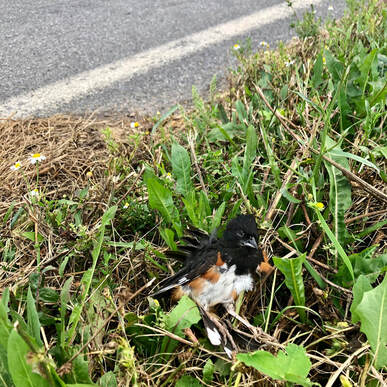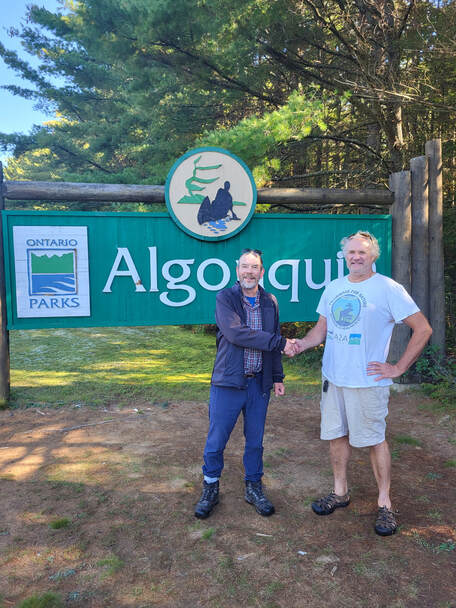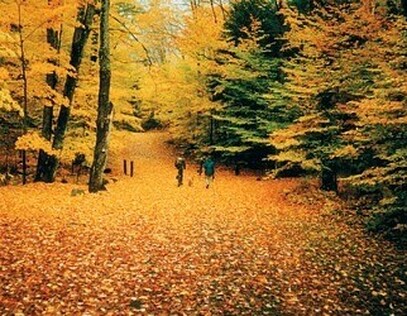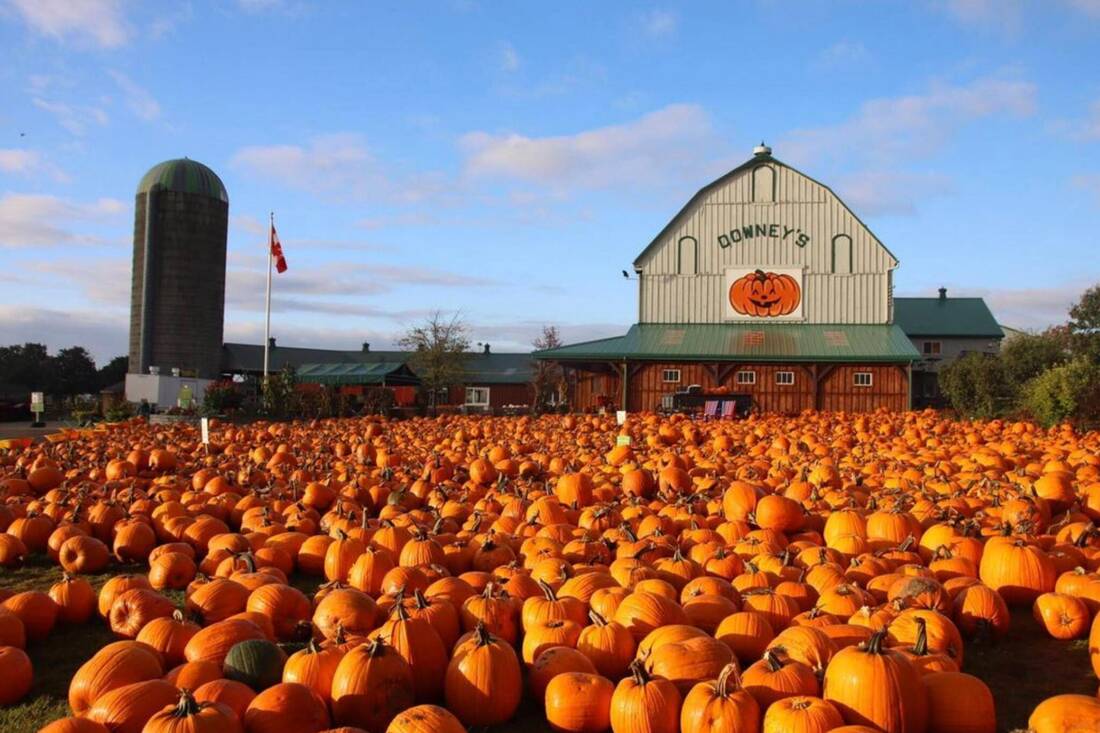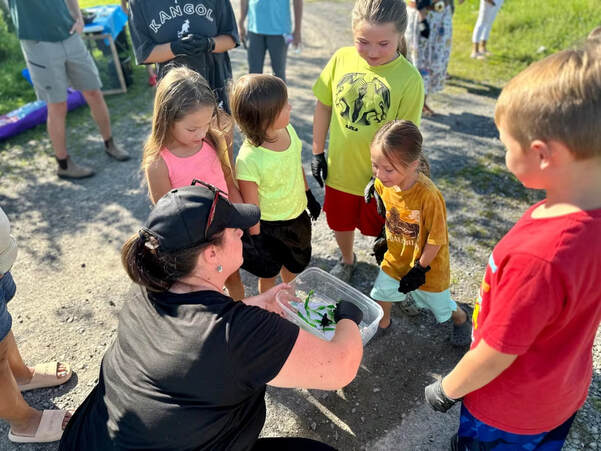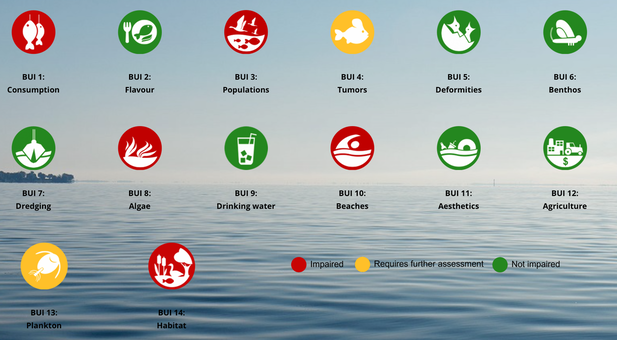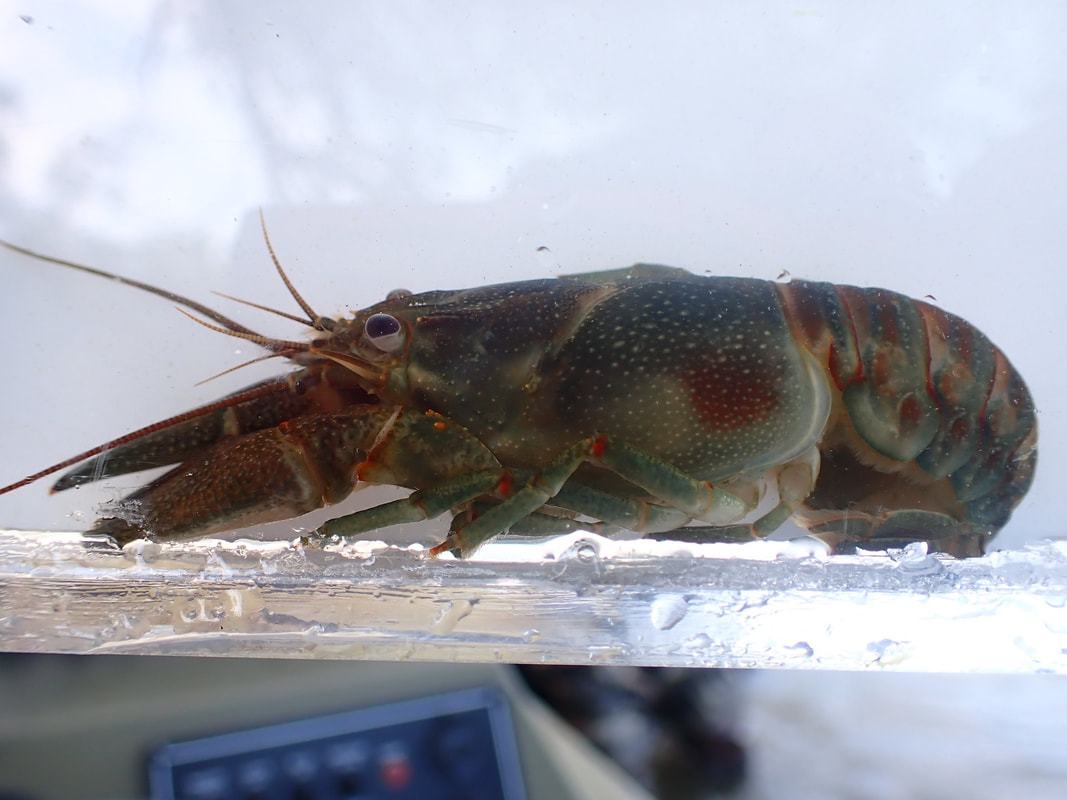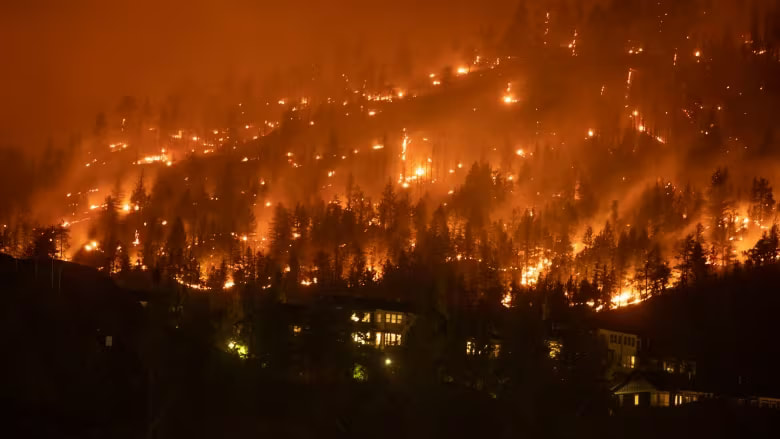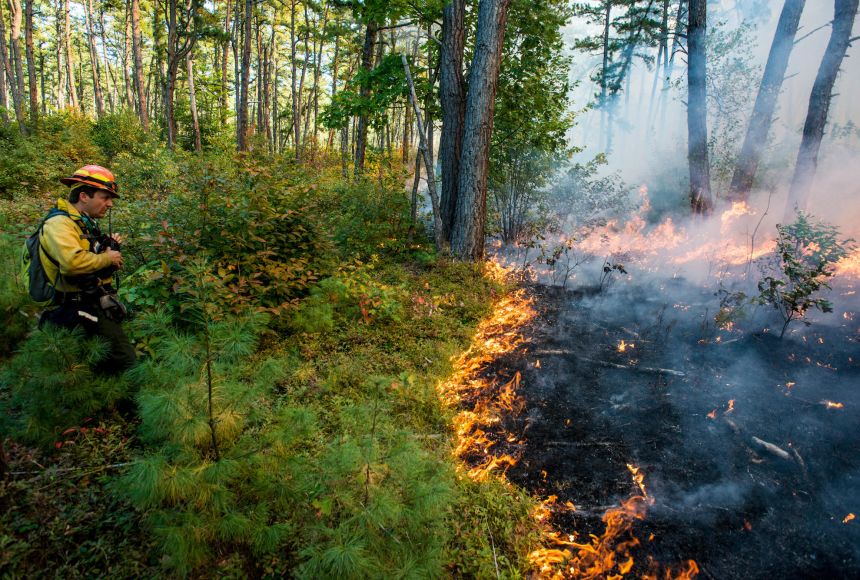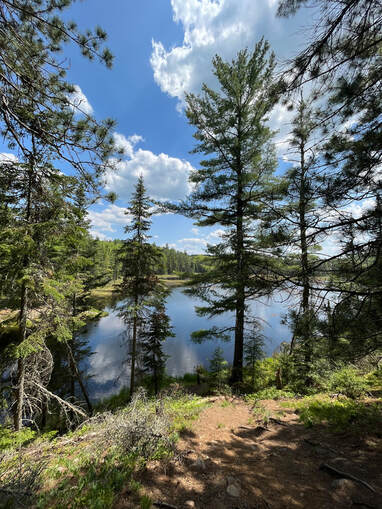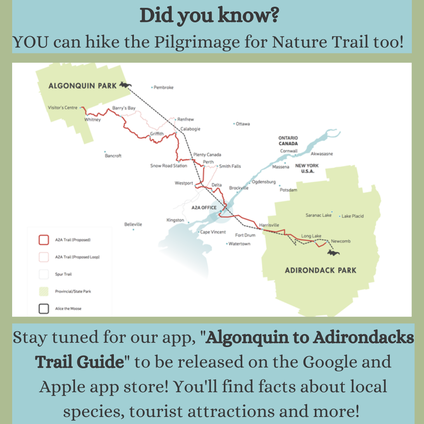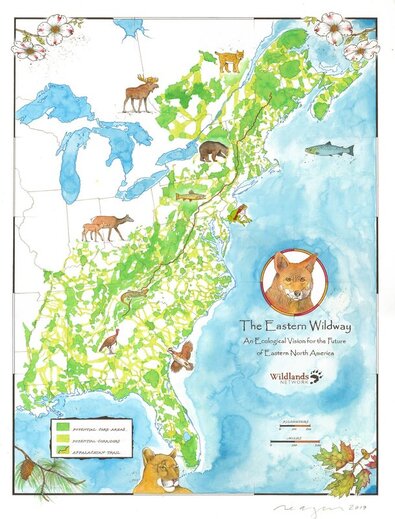|
By Aleisha Pannozzo Inside the Friends of Kingston Inner HarbourIn the heart of Kingston lies the Inner Harbour, home to a rich tapestry of history, heritage and now a vibrant ecosystem brimming with turtles! Since 2011, Mary Farrar, a retired schoolteacher, has led a local community organization known as Friends of Kingston Inner Harbour (FKIH), whose mission includes nurturing the area's rich ecosystems for turtles and other wildlife and safeguarding its cultural heritage. Through initiatives like murals, multi-use trails, and public education programs, the group strives to create a sustainable future while honouring the rich history of the Inner Harbour. Originally established in 2004 to block the city of Kingston’s plans to create a major sports and entertainment complex on the site of MetalCraft Marine, a vibrant boat-building enterprise with a history that spans over 300 years, FKIH lay dormant until Mary and Edward Farrer breathed new life into it, gaining community support for their vision of preserving and enhancing the Inner Harbour neighbourhood and waterfront. Central to their efforts is the protection of the Inner Harbour’s turtle population. The Inner Harbour has a rich ecosystem with numerous turtle species, including painted turtles, snapping turtles and northern map turtles. Since 2016, Mary and the FKIH have painstakingly worked to protect these turtles through stewardship initiatives like shoreline clean-ups and turtle monitoring and mapping. Through a citizen science initiative, they’ve protected over 100 nests in 6 consecutive years, resulting in an increase in hatchlings and “teenagers.” Part of their educational outreach includes turtle awareness campaigns, where they held a series of community events highlighting information about local turtles, as well as Indigenous perspectives on turtles. In 2017, students from Queen’s University Biology program GPS located more than 100 protected nests and created 3 GPS location maps indicating their range. Over 50 volunteers would walk along the shorelines, monitoring these nests and documenting the activity. Their most recent grant was for a radio telemetry study for turtles in Kingston’s Inner Harbour, where they were equipped with an antenna and tracked throughout the summer. The data informed them that many of the turtles go to Kingston Mills to hibernate there. FKIH hopes that these initiatives will help them better understand the turtle population in the Inner Harbour and use this data to inform any development projects that may impact their habitat. Data was also sent to iNaturalist to add to the ever-growing depository of citizen-science observations. Environmental advocacyThe Davis Tannery Property But FKIH's endeavours extend beyond conservation; they serve as staunch advocates for environmental justice. Lately, Mary, FKIH, No Clear Cuts Kingston (NCCK) and other local groups have been using their platform to fight proposed development on the former Davis Tannery property, a 37-acre site located along the shore of the Great Cataraqui River, on the northern edge of Kingston’s Inner Harbour. The property was left polluted by decades of industrial smelting and tannery operations and is being eyed by a developer to build commercial and residential high-density units. Proponents of development say that the area is strategically important to the redevelopment of the Inner Harbour neighbourhood and that the contaminated grounds need to be remediated. But opponents want to prevent its development, stating that the land acts as a carbon-storing urban forest that supports a vibrant wildlife community, including deer, rabbits, swans and the turtles that the FKIH and others have carefully monitored over the years. The site is home to over 1,800 trees, including a 220-year-old oak tree, and contains part of a provincially significant wetland. Nearby, Belle Island is the site of an ancient and sacred burial ground for the Indigenous people of the area. The case for development stands before the Ontario Land Tribunal after the City Council turned down the proposal in 2022. Hearings wrapped up on March 8 between the developer FKIH and NCCK, who raised enough funds to hire a hydrogeologist, an enviro-toxicologist, a wetland/forest ecologist, and a land-use planner to present their case against the developer. Dredging of the Inner Harbour FKIH is also at the forefront of opposition against the proposed dredging of toxic chemicals from the Inner Harbour. Decades of industrial operations, like the Davis Tannery, have left a legacy of hazardous chemicals at the bottom of the harbour. While the federal government seeks to remedy this contamination through dredging, FKIH and its allies challenge the scientific validity of such plans. Leading experts, like Jeffrey Giacomin, a professor of chemical engineering at Queen’s University, expert in water flow, and editor of the prestigious academic journal “Flow,” contend that the current state of these chemicals poses minimal risk. Queens' Professor Kerry Hill has made a critical distinction between 'contamination' and 'pollution.' Currently, the buried contaminant, chromium-3, is not a risk to humans. But when it is oxidized through dredging, it becomes chromium-6— a polluting carcinogenic. Dredging these sediments, they caution, could unleash an environmental catastrophe, rendering the waters of the river and Lake Ontario unfit for drinking or swimming. Such repercussions would affect the delicate aquatic life, including the cherished turtles, and impact the residents and some businesses, including MetalCraft Marine, of the Inner Harbour neighbourhood. As the tides of change ebb and flow, FKIH remains steadfast in their dedication, knowing that the power of community can influence the Inner Harbour’s heritage and natural environment. They continue to engage with local residents, community leaders, and environmental experts to amplify their voice and advocate for sustainable development practices, ensuring that the concerns of the community are heard and considered in decision-making processes. Beyond advocacy, FKIH actively participates in stewardship initiatives, helping to get the community involved in preserving the Inner Harbour's ecological integrity.
0 Comments
an interview with cooper ulianoBy: Erin Postma This past summer, Cooper Uliano was the second person to complete a thru- hike of the A2A Pilgrimage for Nature trail. A few weeks ago I had the pleasure of talking with Cooper about his experience on the trail. Erin: Do you have any past experience with thru-hiking? Cooper: In 2021, my wife and I hiked the Appalachian trail. This was my first big thru-hike. In 2022, we did a few shorter hikes - the Tug Hill Traverse and a Lake Ontario beach traverse. In 2023, a friend and I started the Pacific Northwest Trail. We made it 400 miles before having to stop due to fires. I am hoping that one day I will be able to finish it. This summer I did the Northville Placid trail before starting the A2A trail. Erin: How did you get into thru-hiking? Cooper: My love for hiking and the outdoors comes from my wife. She grew up in a family that loved hiking and the outdoors. She got me into doing big day hikes. One of my first hikes was a day hike up a mountain in the Adirondacks and I loved it. This piqued my interest in doing longer multi-day hikes. In 2021, everything came together in a way that allowed us to do the Appalachian Trail together. We have done a lot of major hiking trips together. She has been working down in South America for a bit so she was not able to join me for hiking the A2A trail. Erin: What was the biggest difference between hiking the A2A trail and other thru-hikes you’ve done? Cooper: The biggest difference was that I was on a trail that people don’t really know about. I was also alone most of the time on the trail. It was cool to be able to tell people about the trail. It was also a great trail for creating my own adventure because there was a lot of opportunity to go off the prescribed trail and discover something new. Erin: If you were to do it again, what would you do differently? Cooper: I like walking - it's my favourite mode of transportation, but I think that doing this trail as multi-modal makes more sense. For example, there are sections of the trail that would have been cool to canoe. Erin: What were some of the highlights of walking the A2A trail? Cooper: Hiking the roads were not so fun but they brought me to some cool places! I also took a few alternative routes that were beautiful. In Oxbow, New York, I took a trail that required bushwacking but it took me along a cliff overlooking a lake. The section of trail through upper Madawaska Provincial Park was beautiful and there were swimming holes all along the section. It was chilly but I spent the day jumping in a few of the swimming holes. Erin: What was a lowlight of hiking the A2A trail? Cooper: I didn't do a lot of planning for hiking the Canadian side. I don’t like to plan too far ahead - I like to see how I feel and plan my day based on that. This resulted in me struggling to find a campsite some nights. A few nights I had to camp illegally which was something I did not want to do but I didn’t really have another choice. Erin: After hiking the A2A trail, what are your thoughts on some ways we can improve the trail to make it a better and more accessible experience for people? Cooper: The biggest challenge I had was the camping situation. It would be great to have a few more designated camping sites along the trail. I also understand that the trail follows a major corridor and the path taken by Alice the Moose, but it may be beneficial to look at some alternative routes to get away from having to hike along so many roads. It would be nice to be in the wilderness a bit more. Most thru-hikers expect to carry 3-5 days of food, so we don’t need a town every day. It might be a good idea to collect alternative routes so that people would have a bit more freedom to “choose their own adventure” or pick the path that best fits their hiking experience. Erin: Did you have any animal encounters? Cooper: I had a wolf encounter near Barry’s Bay. I had just set up camp and was eating dinner. My camp overlooked this gully. It was getting dark and I heard this large animal start coming up the gully towards my camp. A huge wolf came out of the bushes and we just looked at each other for a minute then it walked away. I had never seen one before in the wild, it was huge! Then all night I could hear the pack hunting all around me. Luckily they were not hunting me. But I did not get much sleep that night. Erin: Do you have any advice for people who are looking to do a thru-hike or specifically looking to hike the A2A trail? Cooper: Hike in good weather! I know you can’t control this, but it really does make the experience so much nicer. Also for hiking the A2A, invest in ankle gaiters. I wore trail shoes and when hiking the roads, I got so much sand and gravel in my shoes. Remember to open your horizons on where you travel. This route can be seen as a suggestion. Look for your own adventure. Go on a discovery mission and find cool stuff! The more people who do the trail differently, the better the trail can become. Erin: Any fun stories you would like to share?
Cooper: I won't share the exact location because I want someone else to find it. I took an old snowmobile trail that led to a small pond/marsh. It was about 100 feet across and I had no idea how to cross it. I thought I was going to have to swim across it. I ended up finding an old tin boat. The boat had a hole and I had to use my trekking poles to get to the other side. The boat filled with water quickly and I barely made it all the way across. It was such a ridiculous accident. Erin: Were people receptive and excited to hear about the A2A trail? Cooper: People were very receptive. 95% of my encounters were positive ones. A lot of people were helpful and I received lots of trail magic. I came across a town dump one day and this guy Randy who worked at the dump gave me gatorade and butter-tartes and even tried to arrange a place for me to stay. People were generally a little bit confused but very positive. They thought it was very cool that they had a trail coming through their town. By: Erin Postma
A few weeks ago we had the A2A Celebration Gala. It was a night dedicated to celebrating the A2A region and all the work that has been done over the past few years by the organization. It was so great to see all the work that has been done over the past few months come together. There was delicious food, great people and wonderful entertainment! The night was a huge success and would not have been possible without the support of so many people. Check out some of the photos below for an sneak peak of what goes on at an A2A Celebration Gala. Thanks to Anna Hermes for taking such wonderful photos! By: Erin Postma This past weekend was the A2A Celebration Gala. It was a night dedicated to celebrating the A2A region and all the work that has been done over the past few years by our organization, the A2A Collaborative. The theme of the evening was “A Pilgrimage for Nature,” in honour of the first time any one person has trekked the complete international 650 km trek from Adirondack Park to Algonquin Park! Below you will find my thoughts and impressions: I had a wonderful time! At the start of the Gala I was stationed at the registration table and got to meet everyone as they came through. I could also hear the buzz of conversation in the room from where I sat out in the hall. It was great to see people reconnecting with old friends and making new ones! And it was wonderful to have the opportunity to connect with people who I had only ever met online over the last few months. The music and live auction delivered by David Archiblad were wonderful. He is a very talented musician and performer; he had the crowd engaged and laughing all night! Jamie Findlay gave a lovely talk about his time on the trail, it was great to hear some highlights, lowlights and funny stories. It was so great to see all the work that has been done over the past few months come together. The night was a huge success and would not have been possible without the support of so many people. Thank you to everyone who came out to the gala. Thank you to everyone who was not able to make the event but still managed to support A2A Thank you to everyone who donated to our silent auction and live auction. Thank you to David Archibald for sharing your wonderful music with us as well as your fantastic auctioneering skills. Thank you to Jamie Findlay for giving a lovely talk about his time on the trail. Thank you Pan Chancho for providing us with delicious desserts. Thank you to the Delta Hotel for allowing us to host our event at your hotel. Thank you to all the staff for providing support throughout the whole process. Thank you to the board members of A2A for all your work you have put into planning such an amazing event. We are so grateful to everyone who has supported us and will continue to support us. Your support matters! With your support we can continue our work in connecting lands and people across the Algonquin to Adirondacks region. All proceeds from this year's gala will go towards supporting various projects taken on by A2A, such as conservation action planning, road ecology, mapping, education and connectivity projects.
"The name Jack O-Lantern comes from an Irish folktale about a man named Stingy Jack. Stingy Jack tricked the devil for his own monetary gain." By: Erin Postma It’s about that time of year again where people decorate their doorsteps with pumpkins carved with a variety of faces. Carving pumpkins was always an exciting event at my house. We would visit a local pumpkin patch and pick out the best one. My dad would carve and and my siblings and I would scoop out the guts (that was always my favourite part). I always had fun choosing what face my pumpkin would be sporting that year. As I got older it became less of a family event, but I still try to carve out some time on a gloomy afternoon, put on a halloween movie, drink some hot chocolate and carve a pumpkin. This year I couldn’t help but wonder why we carve pumpkins and I did a little bit of research into the history behind it. The practice of decorating Jack O’lanters originated in Ireland. However they used to carve large turnips instead of pumpkins. The name Jack O-Lantern comes from an Irish folktale about a man named Stingy Jack. Stingy Jack tricked the devil for his own monetary gain. When Jack died he wasn’t allowed in heaven and the devil didn't let him into hell. Jack was sentenced to roam to the earth for eternity. The Irish would carve turnips to scare away Jack's wandering soul. When the Irish immigrants moved to the US they brought this tradition with them. However they started carving pumpkins instead of turnips , as they were native to the region. Samhain is an ancient Irish festival celebrating the end of summer. It was held on November 1st. The world of the gods was believed to be made visible to humans on the evening of Samhain. The gods would play tricks on their mortal worshippers. In the 8th Century the Roman Catholic church moved all Saints Day to November 1st. This meant that All Hallows Eve (Halloween) fell on October 31st. Traditions from Samhain remained, such as wearing disguises to hide yourself from the souls wandering around and carving pumpkins were incorporated into Halloween. We have been carving pumpkins for October 31st ever since. I hope you can get outside this week and visit your local pumpkin patch. Pick out your favourite pumpkin, bring it home, cut it open, scoop out its guts then carve it with a creative face. Maybe even roast the pumpkin seeds - they make a great snack! Here is a list of some local pumpkin patches you should visit!
Frontenac Hastings, Lennox, Addington, Prince Edward. Ottawa
“For some parts of the trek I felt like I was sort of flying by the seat of my pants.” Jamieson Findlay. By: Erin Postma Jamieson Findlay works for Nature Canada as a science and conservation writer. Jamie learned about the A2A Trail about 4 years ago when he was working for Parks Canada. He came across the Algonquin to Adirondack Trail while he was writing a piece on animal travellers; Alice the moose was one of them. The A2A trail “A Pilgrimage for Nature” is based on the migration path of Alice. On August 12, 2023 Jamieson Findlay and his friend Bill Barkley embarked on a 650 km journey from Adirondack Park to Algonquin Park. This exciting trek was a collaborative effort with Nature Canada, a leading conservation organization dedicated to protecting Canada's wildlife and their natural habitats. On September 16th, 36 days after they began their journey, Jamie along with Bill crossed into Algonquin Park. This week I had the pleasure of talking to Jamie about his experience on the trail. Here are a few excerpts from my interview with Jamie. Erin: Why did you want to hike the Pilgrimage for Nature Trail? Jamie: There were a few different reasons why I was drawn towards hiking the “Pilgrimage for Nature Trail.'' The Adirondacks are one of my favourite places. My parents also live near the Thousand islands so I am familiar with parts of the A2A region. The Pilgrimage for Nature seemed like a more manageable through-hike than others, like the Appalachian Trail. I was ready to do something out of the ordinary. I spend a lot of time at work in front of a screen and I wanted to take this opportunity to get out into nature and really experience it. My friend Bill was also interested in doing the hike. The time was right and everything seemed to come together in a way that created a perfect opportunity to do this trek. Erin: Do you have any previous experience with long distance hiking or through hikes? Jamie: Growing up I spent a lot of time outdoors. My family really enjoyed hiking, camping and canoeing, but I am not a hardcore hiker or backpacker. I did a hike to the Everest Base Camp, which was a 2-week long trip, but it was very different from the A2A trek. Erin: How did you prepare for the trek? Jamie: Unfortunately, I did not have much time to prepare for the trek due to a very busy spring and summer. I was able to do a few short hikes in Gatineau Park. I tried out a few different packs and broke in my hiking shoes. I would usually put some stuff in the pack, like a case of beer, in an attempt to prepare for carrying the packs on the trail. I wished I’d had more time to study the route. For some parts of the trek I felt like I was sort of flying by the seat of my pants. Erin: What was the highlight of the trek? Jamie: Overall the trek was a great experience. I learned a lot, particularly from Bill. Bill has excellent backcountry skills and knows a lot about nature. My favourite parts of the trail were the first part of the hike through the backcountry of the Adirondacks. I also loved the last section from Barry’s Bay to Algonquin Park. I followed a rail trail that went along the Madawaska River and was a very beautiful part of the hike. I also met many people along the way. Everyone we met was very friendly and interested in the trek; some people even offered us a free place to stay. A highlight was getting a horse and buggy ride from an Amish farmer who was very nice. We also stayed with a very interesting couple who taught us a lot about the history and conservation of the Adirondacks. But some of the best nights were staying in town and stopping in at the local pub for a beer and some french fries! Erin: What was the hardest part of hiking the trail? Jamie: The hardest part of the hike were the long sections of walking along paved roads. Walking 7-8 hours a day on pavement with heavy packs is not fun. That’s why, towards the end of the trek, I switched to biking. There were also some nights where we were not sure where we were going to sleep. There were no B&Bs or campgrounds around so we had to “hobo” camp some nights. Sometimes we would just pitch a tent on public lands, but there was always apprehension and uncertainty that came with that. One evening was particularly bad. The mosquitoes were bad, there was no water and we spent the evening listening to some coyotes fighting nearby. Bill usually insisted on breakfast and coffee in the morning, but that morning we skipped it and headed out right away. Erin: Bill had to leave, to go back to his orchard part way through the trek. How did Bill's departure change the experience? Jamie: Bill and I got along really well; we had a great time together and shared a lot of laughs. I was able to learn a lot from Bill. It wasn’t the same when he had to go back to his orchard. It was nice for me to have someone to share the experience with. When Bill left I was joined by my friend Lisa, who hiked with me for 4 days. I was only on my own for about 10 days near the end of the trek. By the end I was tired of walking and thinking about getting back to work and finally experiencing the accumulative effects of the pack. The end was not the same as the beginning. I missed having a hiking partner. Erin: Did anything surprise you about the trail? Jamie: Something that surprised me was the amount of people I came across that did not know about the A2A corridor. People knew a lot about the A2A region and the area they were living in, but they were not aware that it was part of this big ecological corridor. It's important to get people to see their backyards as an important piece of the bigger ecological picture. Many people were very happy to talk to me and learn more about the corridor. Erin: Any animal encounters? Jamie: We encountered some wildlife along the way including turtles, salamanders, mink (we believe) and coyotes. We had one pretty interesting encounter with coyotes. One night we could hear a pack close by that sounded like they were fighting. Unfortunately we didn't see any moose, bears or wolves. It's sad to say but we encountered a lot of roadkill. I think that we must have seen more dead animals than live ones. Erin: Did you notice changes in the trail as you moved further north? Changes in terrain, ecology, people? Jamie: The route starts in the High Peaks and Five Ponds areas which are all wilderness and you are hiking through the backcountry. Then once you leave Adirondack Park you enter the St. Lawrence Lowlands, where you find lots of agricultural land and settled towns. Then as we made our way north we entered the semi-highlands and then returned to the wilderness. The wilderness sections bookend the route. Leaving the wilderness meant hiking a lot of paved roads instead of trails. Throughout the hike, the people we met were all very friendly and interested in the hike. It was interesting in certain areas of the United States, like upstate New York, we noticed that people were very open about their political stances. Erin: If you could pass on any advice to others wanting to complete a thorough hike of the A2A trail, what would it be? Jamie: If people would like to do the whole trail, I would suggest using different modes of transportation. There are times along the trail where biking or canoeing would have been better than walking. I had access to a lot of help and resources from people along the way, which I was very thankful for. Tapping into this network of people along the trail that are connected with A2A would be beneficial. I found that people were very willing and happy to help him along the way. Some general advice for being in the backcountry is to be prepared. There is no connectivity in some spots so you have to be very self-sufficient. Also pack as light as possible; those packs get heavy! I just want to thank Jamie for taking time out of his schedule to talk to me about the trek! If you want to learn more about Jamie's trek and the Pilgrimage for nature click the button below. If you want to support the work of A2A click the button below
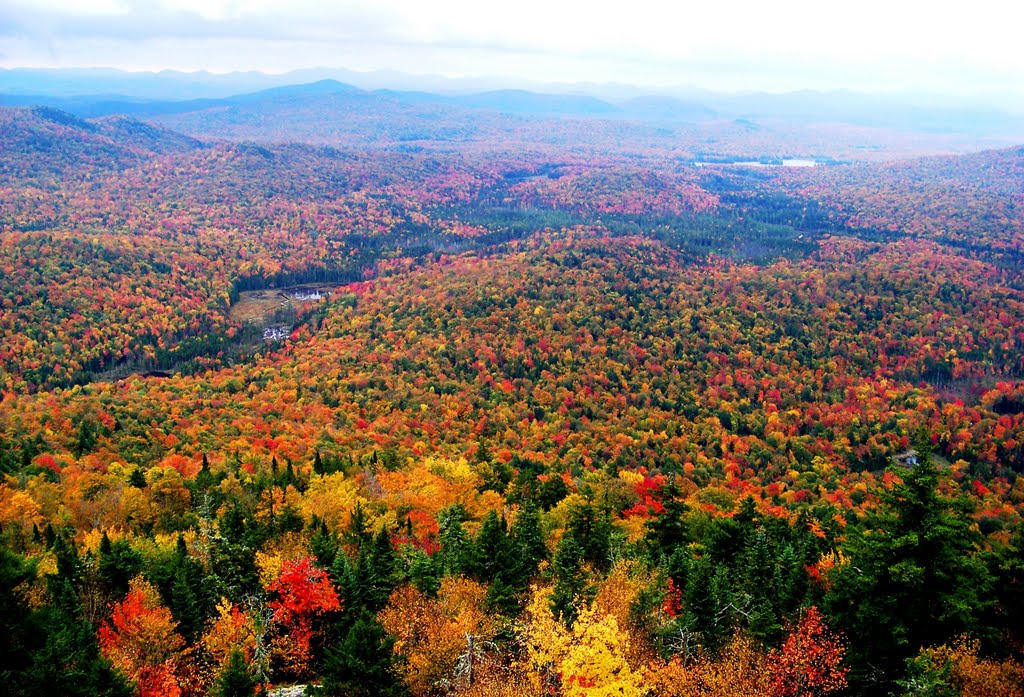 The colours of fall (A2A collaborative) The colours of fall (A2A collaborative) “Life starts all over again when it gets crisp in the fall.” F Scott Fitzgerald By Erin Postma As a kid, I loved summer. The days were filled with sandcastle building, ice cream treats and lake swims. Not to mention, there’s no school! Summer was the best! Now that I’m a bit older, I find that I get so excited for the end of summer. I get excited by seeing the first red leaves, waking up to the first chilly morning and getting a chance to eat anything labeled ‘pumpkin spice’. Without thought or provocation, I fell in love with fall - and all the beauty that comes with it. Here in the A2A region, fall is an amazing time of the year. We get to experience the many wonders of fall such as the autumn morning fog, the leaves changing and the crisp fall air. Fall is a great time of the year to get outside and enjoy the wonders that come with the season. I like to plan a camping trip every fall so I can spend a few days surrounded by the fall colours. There is something about taking a stroll through a colourful landscape that makes me feel very nostalgic and comforted. The fall colours, those rich reds, warm yellows and vibrant oranges, are colours used in colour therapy to convey positive feelings of fun, cheerfulness and enthusiasm. And the crunching noise made as you crush the fallen leaves underfoot can be a real smile-maker. The fall climate makes the outdoors more appealing. The cooler temperatures make the outdoors more inviting, it is not too cold or too hot. The fall air is crisp and cool, which makes getting fresh oxygen easier. And while getting fresh oxygen is important for us to function properly, it also helps with the release of serotonin, which is a happy hormone. Fall also has a certain smell, it is a mix of rain, earth and leaves, and to me it just smells like nature! With the weather changing and the sun setting earlier and earlier, it is important to get outside to improve your mental wellbeing. Taking a short walk during the day or sitting outside bundled in a blanket can help improve your mood, reduce stress and help fight off seasonal affective disorder. It is hard not to worry about the upcoming winter, but try to enjoy the fall. Take advantage of the beautiful fall weather and get outside while you can! With the fall comes so many great outdoor activities. Fall is the best season to go hiking. The beautiful scenery and perfect weather creates ideal hiking conditions. Fall is also a great time to go camping! There are also many outdoor fall activities such as apple picking, visiting a pumpkin pack or going to a corn maze. The best part about getting outside in fall for me is that there are usually less people around. I find it easier to book a camping site, enjoy solitude with nature, see unencumbered views and take photos without people getting in the way. Outdoor spots are usually packed with people during the summer, making them less enjoyable. I find getting outside in fall much less stressful and an overall better experience.
Fall provides us with many beautiful opportunities to get outside. I hope you all are able to get outside and see the fall colors or enjoy one of the many fun fall activities, or even just sit outside with a nice cozy sweater and a warm drink. If you live in the A2A region I highly encourage you to take a hike or a walk this fall! Preserving tradition, restoring rivers By Aleisha Pannozzo This month, I had the opportunity to interview Kayla Sunday, Environmental Programs Manager, and Britney Bourdages, Environmental Projects and Remedial Action Plan Coordinator, of the Environment Program at Mohawk Council of Akwesasne (MCA). Through our chat, Kayla and Britney shared the amazing work that the MCA’s Environment Program has undertaken in their territory. They have a substantial aquatics program that focuses on the health of the Kaniatarowanenneh (St. Lawrence River), as well as a terrestrial program that involves culturally based environmental assessments, turtle incubation programs, stewardship initiatives and much, much more. MCA’s Environment Program strives to achieve Sken:nen (Peace) for all of creation by undertaking projects and services that respect, preserve, and protect the natural world (MCA). The aquatics program heavily focuses on the health of the St. Lawrence River—and for good reason. Akwesasronon have lived alongside the St. Lawrence River for thousands of years and have always lived in harmony with the natural environment. “We turn our minds to all the Fish life in the water. They were instructed to cleanse and purify the water. They also give themselves to us as food. We are grateful that we can still find pure water. So, we turn now to the Fish and send our greetings and thanks. Now our minds are one.” This excerpt is from Ohen:ton Karihwateh:kwen (Thanksgiving Address), which is recited at the opening and closing of ceremonial gatherings and other significant events, as a reminder of essential elements to be collectively thankful for. Fish are important to the Mohawks, and their relationship has been disrupted by environmental contamination. The creation of the St. Lawrence Seaway opened up opportunities for industrial factories, and this operational hub became the source of decades of industrial pollution that severely degraded the health of the river and its surrounding community (L.A Times). In 1987, after data indicated the severity of the situation, the St. Lawrence River Cornwall/Akwesasne area was designated as an Area of Concern (AOC) by the Canada-U.S. Great Lakes Water Quality Agreement. At the time, the MCA played a key role in seeking this designation due to the widespread impact that Akwesasronon experienced over decades as a result of this extensive industrial pollution. This contamination not only affected the health of the river but also the cultural traditions of the Mohawks who relied on the river and its fish for food. A remedial action plan (RAP) was developed to define water quality issues and identify specific remedial actions needed to improve the health of the river, local ecosystems, and local communities. It focuses on Beneficial Use Impairments (BUIs)— impairments from human activity that negatively affect the use or enjoyment of the river. The St. Lawrence River Area of Concern at Cornwall and Akwesasne has 14 BUIs, 7 of which have been deemed ‘unimpaired’ since the last assessment in 2022 (St. Lawrence River RAP). Due to the nature of the relationship between the river and Mohawks, MCA is in the process of creating Cultural Delisting Criteria to ensure a more holistic and complete overview of the BUIs, which were established in the late 80s and only included Western scientific criteria. They continue to be at the center of collaborating with various government departments, agencies, and environmental organizations to restore the health of the St. Lawrence River and preserve the cultural traditions that are so intimately woven with it. Please read below to learn about the amazing work that the Environment Program is doing to restore the health of the St. Lawrence River. For a deeper dive into MCA's extensive range of projects beyond the river, I invite you to explore their website and Facebook page. I would like to extend my sincerest gratitude to two remarkable women who play pivotal roles in the Environment Program at MCA— Kayla Sunday and Britney Bourdages. Their willingness to generously share their time with me to discuss the multitude of projects underway at MCA has been instrumental in shedding light on the vital work being done in Akwesasne and along the St. Lawrence River. This piece would not be possible without their wealth of knowledge, invaluable insights and contributions. Eutrophication Monitoring Study In partnership with the River Institute (RI) and Raisin Region Conservation Authority, MCA is conducting a 2-year eutrophication monitoring study. The purpose is to conduct water quality monitoring in tributaries, tributary mouths and at offshore areas within the St. Lawrence River Area of Concern at Cornwall and Akwesasne. They will be assessing nitrogen, phosphorus, and fecal coliform levels, to help assess the status of BUI #8- Eutrophication and Undesirable Algae. In addition to monitoring for algal blooms, they will be sampling benthic invertebrates for further analysis of water quality. In the event that test results determine unhealthy levels of these nutrients, point sources of contamination will be identified. Osprey Monitoring MCA is in their second year of osprey monitoring to inform the Remedial Action Plan for BUI #3- Degradation of Fish and Wildlife Populations. One of the delisting criteria for this BUI includes the presence of successfully reproducing osprey in the Area of Concern for a minimum 5 years. In 2023, they observed 3 successful nests, with chicks reaching fledgling status; however, not all nests were successful, with some remaining vacant or experiencing unsuccessful reproduction. Ospreys are a type of hawk that are protected under the Ontario Fish and Wildlife Conservation Act. The St. Lawrence River provides important habitat and is a critical food source for ospreys who depend on fish from the river. These birds impact fish population sizes, maintaining the delicate balance of the food web, and ultimately contributing to the health and vitality of the river (River Rapport). Fish Contaminant Study In the Fall of 2020, the MCA led a 2 year contamination study for local fish found in Akwesasne waters that have previously been under-sampled through provincial fish contaminant monitoring programs. Over 300 fish were sampled and sent to the lab to be tested for mercury and PCB. The data is currently being analyzed to help inform consumption guidelines and will be used to inform BUI #1 Restriction on Fish and Wildlife Consumption. Lake sturgeon and American eel— both culturally significant species to Akwesasronon—are presently being sampled and will be sent to the lab for contaminant testing to provide a comprehensive study that is inclusive to their values. If any eels are sick, morbidly injured or dead, they will also be necropsied to determine if they were from stocked or native populations, which will help determine the effectiveness of stocking programs and provide further insight into the health of native populations. Fish Identification Nearshore Study (FINS) The Fish Identification Nearshore Study (FINS) began in 2015 as a partnership between MCA and the RI in an effort to understand and monitor changes in nearshore fish communities in the Upper St. Lawrence River and its tributaries. This research project is the most comprehensive study of its kind and has resulted in one of the largest datasets for the upper St. Lawrence River. MCA has secured funding for the next few years to conduct an MCA-led Akwesasne Chapter of this project. The goal is assess nearshore populations and water quality parameters to help determine future restoration projects and provide data to inform our knowledge in relation to the current health of our shoreline communities. Methods for FINS include using drones to lessen impacts on the ecosystem, so a strong focus for the MCA has been training for aerial drone certification. A few weeks ago the RI and MCA FINS teams identified an invasive species, the rusty crawfish, at yellow island. They are an aggressive species that easily spreads and can outcompete for resources with native crawfish. They’ll be documenting their spread in Akwesasne and the upper St. Lawrence River to better manage their invasive population. Understanding Sturgeon to Protect our Future
As the oldest and largest native fish species found in the North American great lakes system, lake sturgeon have swam our waters for over 200 million years. Yet, their survival is being threatened by human activity. Poor water quality, over-harvesting, habitat degradation and fragmentation (via dams and other barriers) have endangered the Great Lakes-upper St. Lawrence population in Ontario. Complicating matters, lake sturgeon are late-maturing and only reproduce every 4 years on average, making repopulation all the more difficult (NWF). Recognizing the severity of the situation, MCA is conducting an initiative funded by the Aboriginal Fund for Species at Risk (AFSAR) to assess populations of lake sturgeon in the St. Lawrence river. They will monitor, survey and implement initiatives, such as spawning beds, to restore populations. They recently received telemetry equipment courtesy of the Canadian Wildlife Foundation, which will be used to better understand spatial movements of lake sturgeon to identify critical habitats for remediation or restoration. So far they have tagged 20-30 sturgeon through work with Traditional Practitioners— fisher-people who work with sturgeon for ceremonial purposes. These practitioners are integral to preserving cultural traditions and facilitating the transmission of cultural knowledge that has been passed down for millennia. Lake sturgeon hold deep cultural significance to the Mohawks of Akwesasne. From the art of fishing, to the intricacies of cleaning, smoking and eating, these traditional practices flow through generations and continue to this day. Rooted in family and community sharing, these skills are often taught in Kanien’keha (Mohawk language) (SRMT). The MCA, along with partners such as the Saint Regis Mohawk Tribe, continue to work towards the conservation of lake sturgeon to protect populations— and by extension, Mohawk heritage. Community workshops for lake sturgeon and American eel are planned for this year to nurture this connection and celebrate their traditional uses, from food preparation, medicinal uses and textiles, ensuring that their cultural legacy continues to thrive. We are currently experiencing the worst wildfire season on record, and I can't help wondering how we got to this point? By Erin Postma Eco-anxiety is the fear of environmental cataclysm that comes from observing the impact of climate change and the effect it could have on your future. Eco-anxiety is something that I have been experiencing these last few weeks, and I don't think I am alone. Every time I turn on the news or check social media, all I see are the various natural disasters occurring all over the world, specifically the wildfires. It breaks my heart to see our country, as well as countries around the world, burning. Eco-anxiety can feel overwhelming, and it makes it difficult to act or celebrate success stories. I find myself stuck in this feeling of helplessness and hopelessness. I can’t help but wonder, how did we get here? How did we let it get to this point? The worry that we are feeling is legitimate. Climate change is here, and it is a real threat. We are currently experiencing the worst wildfire season on record. As of Tuesday, over 1,000 wildfires were burning across Canada— with 650 deemed out of control. These wildfires have caused people to evacuate their homes, caused damage to many structures, and have resulted in multiple fatalities. They have destroyed entire ecosystems. The wildfires have also caused a significant decrease in air quality across the country and the United States. The effects of these wildfires have been devastating and are felt all over the country. These wildfires are devastating but not shocking. Mother Nature has given us so many signs. She has shown us time and time again the path we are headed down if we don't make a change. But none of these signs seem enough to trigger the change needed. What needs to happen for us to take climate change seriously and make a drastic change? I don't understand how we can stand by while our beautiful planet is suffering. We have entered a period of warming and wildfires. Climate change has led to the accumulation of dry biomass, increased heat waves and the alteration of the water cycle. All of these factors are increasing the intensity and frequency of wildfires. We need to be prepared to face more frequent and higher-intensity fires. Regions that have never experienced large-scale fires need to be ready. The A2A region has a history of wildfires, but nothing like the fires we currently see burning in British Columbia or the Northwest Territories. However, that doesn't mean we won't experience fires of this magnitude in the future. According to a study in the Adirondacks, it is not likely that we will be heavily impacted by wildfires—but with the unpredictable weather brought about by climate change, we can't be sure (Benett, Adirondack Explorer). There are a few ecological factors that protect the A2A region from being devastated by wildfires. The region is less prone to wildfires due to its generally humid climate, biodiversity, land management, and connectivity. Even though out-of-control, devastating wildfires don't occur often in the A2A region, it doesn't mean they won't. We are living in unpredictable and unprecedented times. No area is immune to the effects of climate change. In the event they do happen, we need to prepare and take preventative measures. There are things we can do to stop these wildfires. We need to practice proper forest management, including using prescribed burns. We need to encourage the protection and preservation of biodiversity. We need to fight climate change and curb our greenhouse gas emissions. Wildfires are scary and cause devastation, but they are also necessary and can have positive effects when controlled. Prescribed burns can help lower the risk of unpredictable, uncontrollable wildfires. Humans have been using prescribed burns for thousands of years. Many species require fire to survive and reproduce. Wildfires move the layer of decaying material from the forest floor—this helps increase soil fertility. There are plants that require fire for germination. Wildfires can also help manage invasive species. Fire can be a wonderful life-bringing force when used responsibly. Unfortunately, because of human irresponsibility, it has become a force associated with death and destruction. I am mad and terrified about the future of the planet. I feel a little bit helpless but not hopeless. I know there are people out there who care and are working hard to make a positive impact.
Anthropogenic climate change has brought about countless out-of-control wildfires, yet another reason we need to act quickly to curb the effects of climate change before it is too late. I am scared about what the future of our planet might look like. How can we watch our world burn but continue with business as usual? We need to turn our eco-anxiety into eco-action. What happens next is up to us -good or bad, scary or scarier. The Pilgrimage for Nature Trail is symbolic of the regions need for ecological connectivity By: Aleisha Pannozzo As an avid hiker and nature enthusiast, I have always appreciated how my body and mind feel after a good hike on a beautiful trail. There is something about the sound of leaves and twigs crunching below my feet, the symphony of chirping birds, and the gentle breeze between the trees. My favourite trails are those that wrap around a serene lake or trace the unhurried pace of a tranquil stream. The sound of gentle water has this uncanny ability to drown out your thoughts and immerse you in the present moment. There is no worrying about the future, yesterday's mistakes, or tomorrow's uncertainty. There is only Now. Nature has this amazing power to inspire, rejuvenate, and provide you with solace. Trails are the bridges that connect our souls to the natural world. They also act as tangible pathways that grant us entry into the heart of the wilderness. This connection to nature's soothing embrace brings to mind A2A’s Pilgrimage for Nature trail, which our partner Jamie Findlay is currently trekking through. This 640-km trail winds its way through different forest communities, from the northern hardwood forests in the Adirondacks to the southern deciduous forests in Algonquin Park. The very essence of this trail encapsulates the transformative experience of being in nature. Just as the sound of water draws us into the moment, the Pilgrimage for Nature Trail beckons us to step away from our daily lives and immerse ourselves in the beauty of the outdoors. But this trail represents more than just a physical journey. It is symbolic of something much bigger. It reminds us of the important role of connectivity in our environment and the role that humans play in providing it. It is symbolic of the critical link that this unique ecological region provides for wildlife migration in the great Eastern Wildway, which extends from the wilderness of Ontario and Quebec, down to the Adirondacks, through the Appalachians and into the Everglades. It is one thing to have core protected areas, but how does that serve our wildlife in the grand scale of things? Wildlife needs to be able to migrate between these areas; without linkages, they are isolated, risking a decline in genetic diversity and ultimately, species extinction. Ecological corridors, like the one represented by this trail, are essential for maintaining biodiversity and supporting the movement of wildlife. They allow animals to follow their natural migration patterns, forage for food, and find suitable habitats, all of which are crucial for their survival. These corridors serve as lifelines, enabling animals to navigate through fragmented landscapes and adapt to changing conditions brought about by climate change.
The Pilgrimage for Nature Trail serves as a living example of how human efforts to create connectivity can mirror the natural world's complex web of interactions. Just as we yearn for the solace and tranquillity that the trail provides, wildlife requires similar pathways to thrive. It becomes a microcosm of the broader conservation goals that we must prioritize for the health of our planet and its wild inhabitants. So, as you venture along the Pilgrimage for Nature Trail or explore other trails that captivate your spirit, remember the greater message they convey. They are not just paths for us to tread; they are pathways to understanding, appreciating, and safeguarding the necessary connections that sustain life on our planet. |
Details
AuthoRSAleisha Pannozzo Archives
March 2024
|
© 2024 Algonquin to Adirondacks Collaborative
A2A is a 149(1)(f) registered Canadian charity | BN: 86307 1668 RR0001 | and a 501(c)(3) tax-exempt organization in the U.S. | IRS #86-1358996 |
Become a Member | Maps & Region | FAQs | Donate Online | Contact Us
A2A is a 149(1)(f) registered Canadian charity | BN: 86307 1668 RR0001 | and a 501(c)(3) tax-exempt organization in the U.S. | IRS #86-1358996 |
Become a Member | Maps & Region | FAQs | Donate Online | Contact Us

